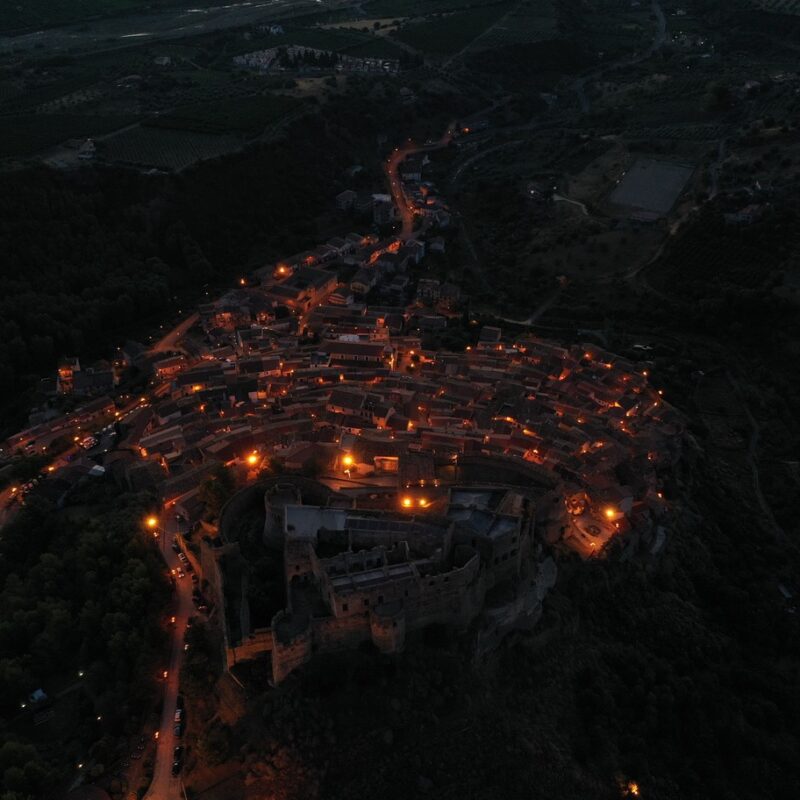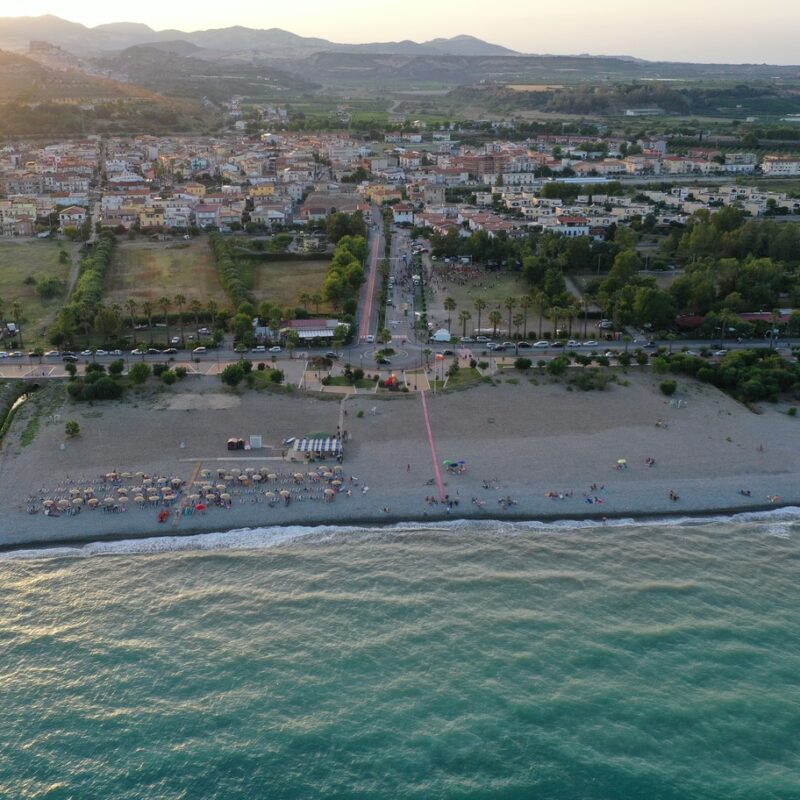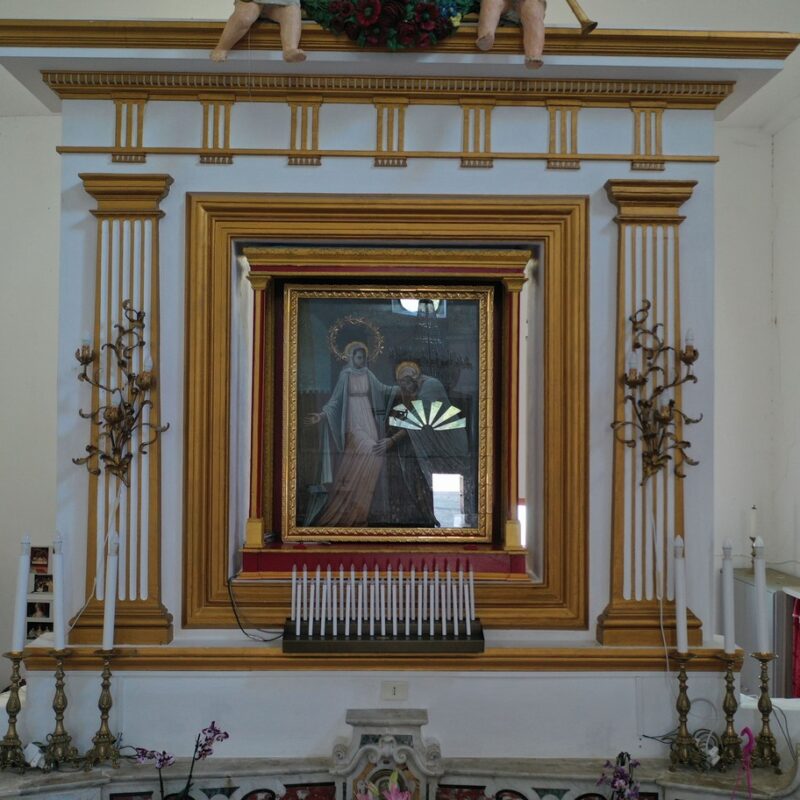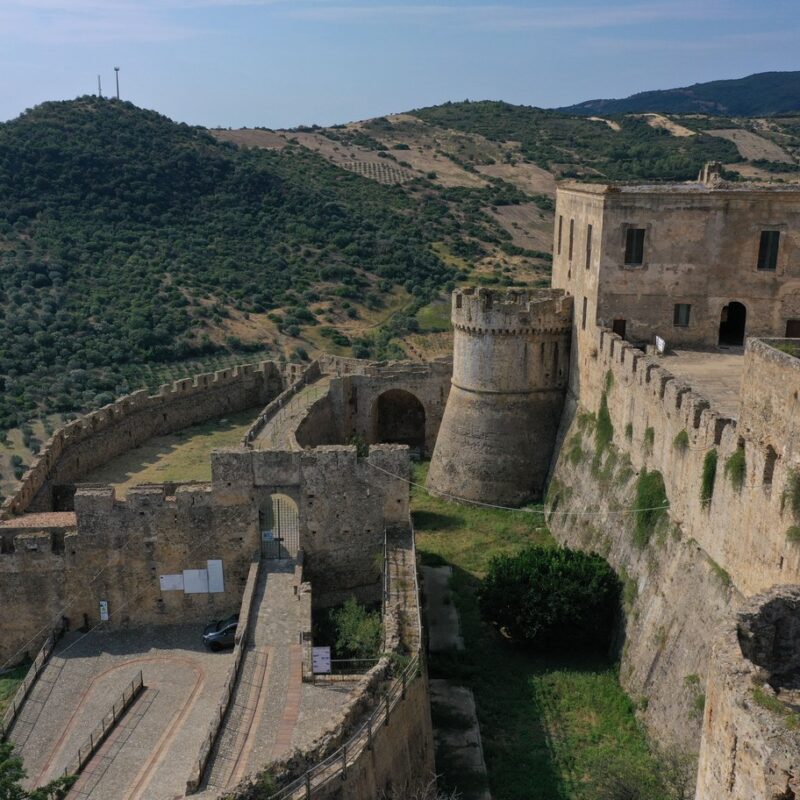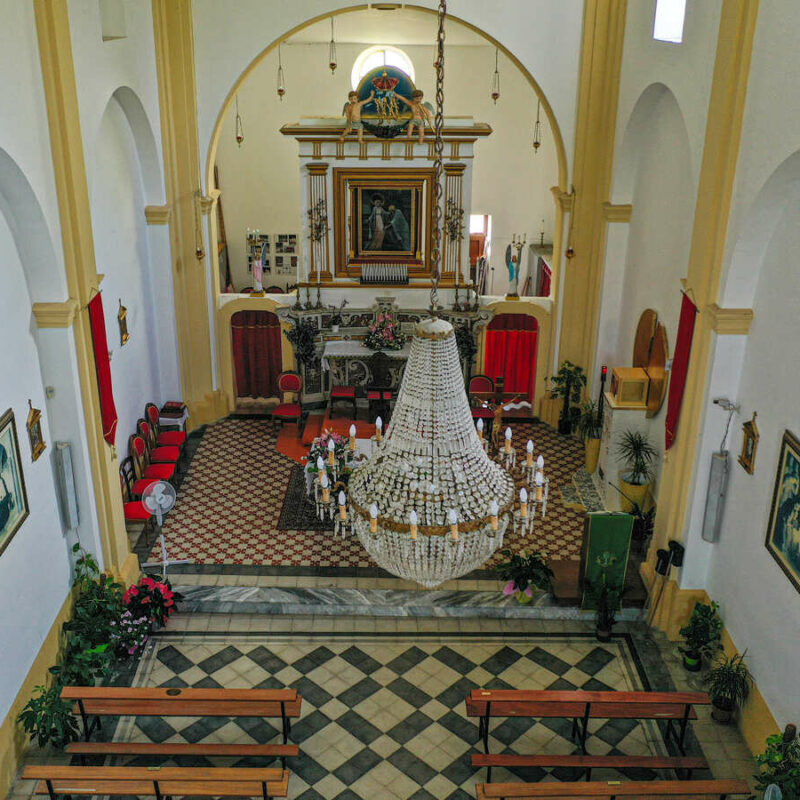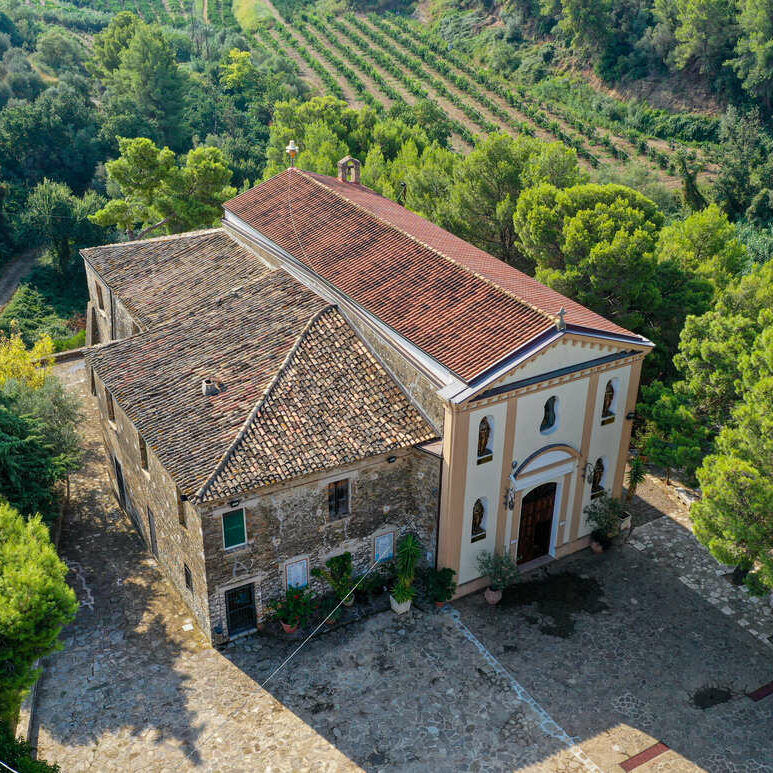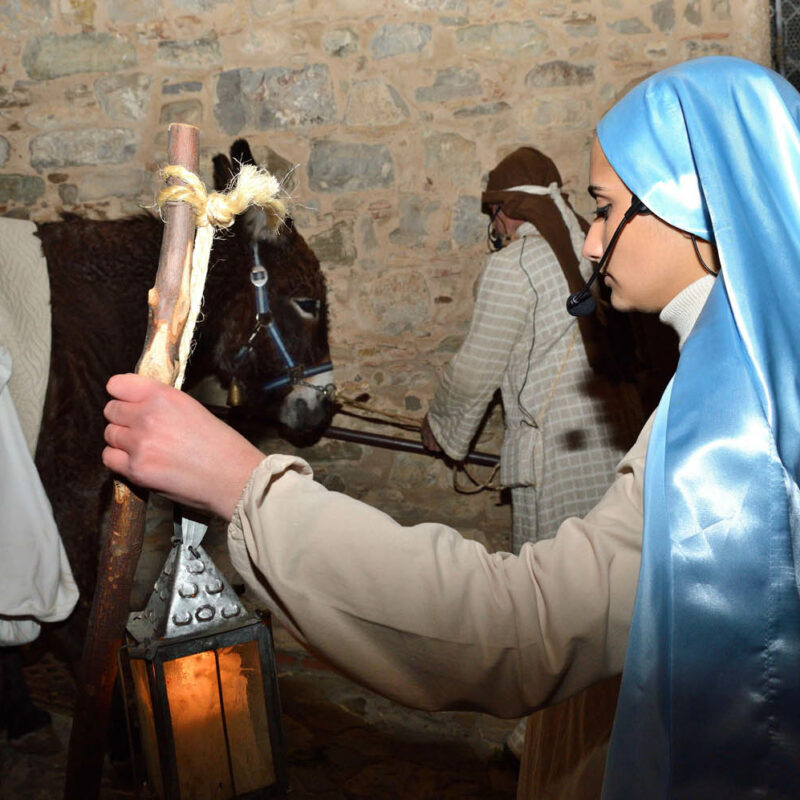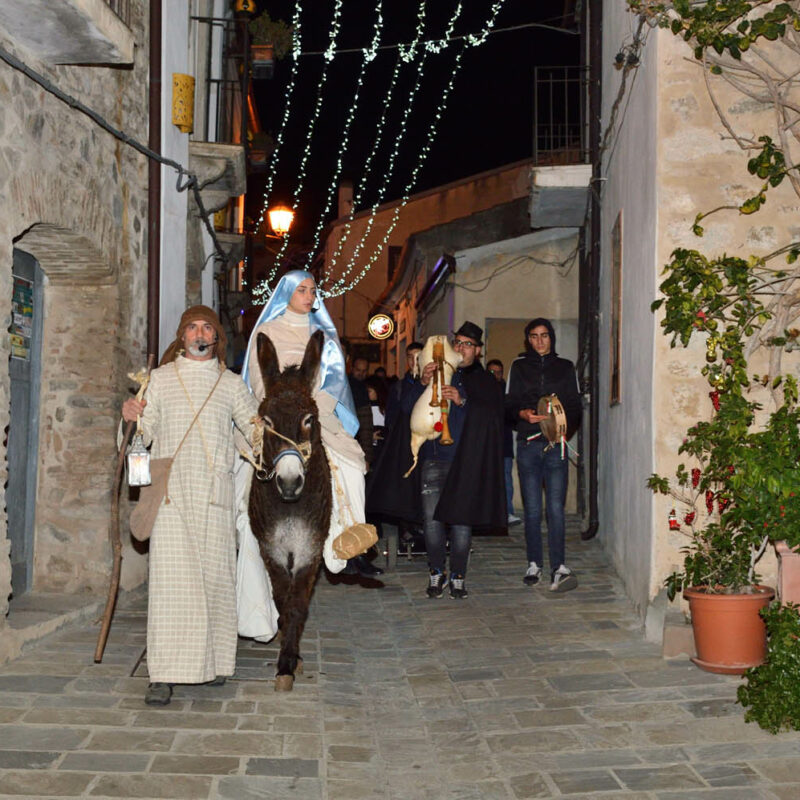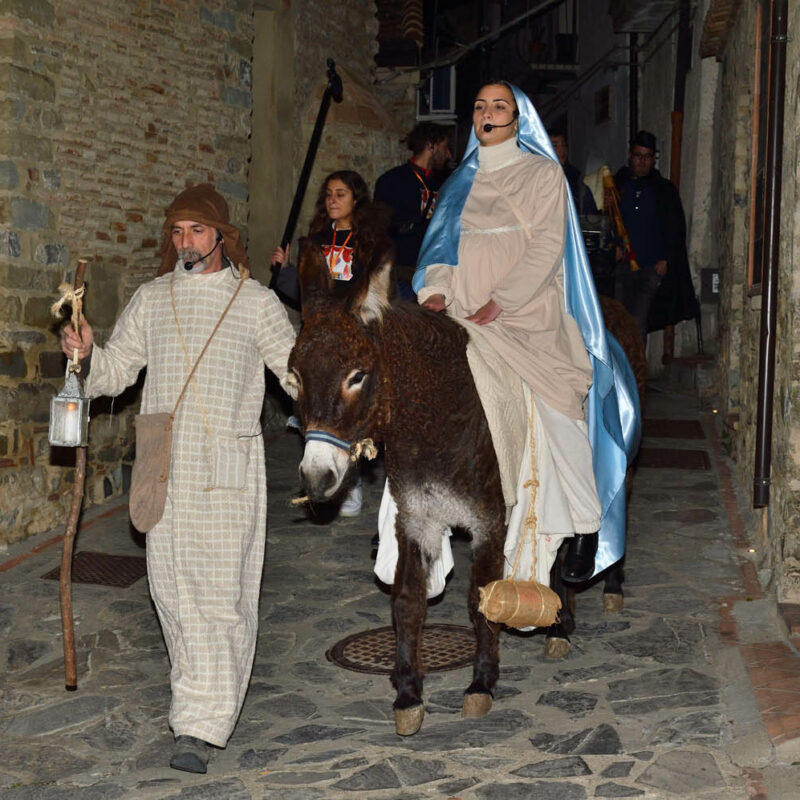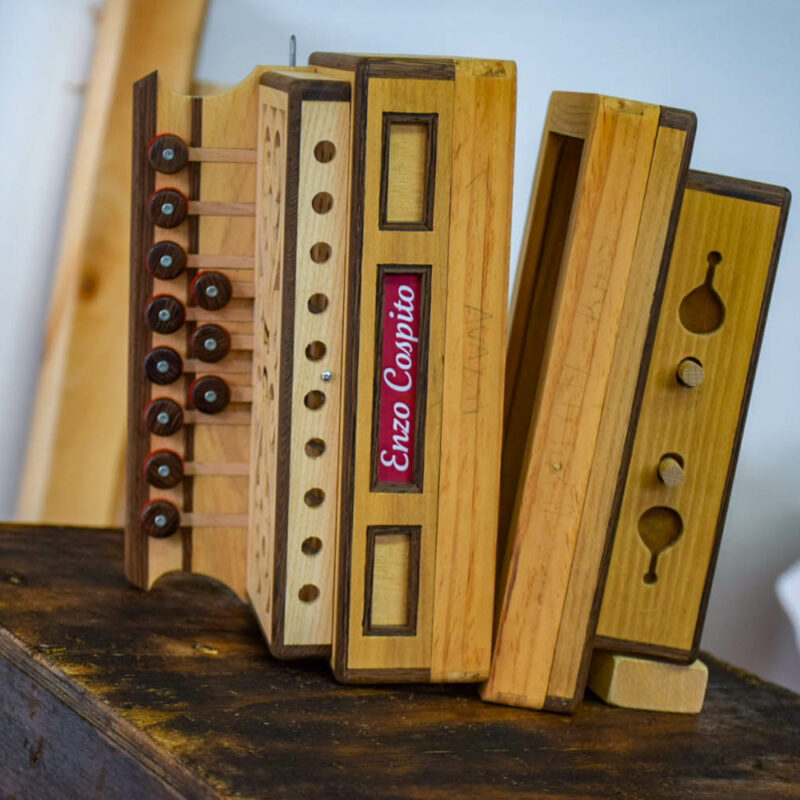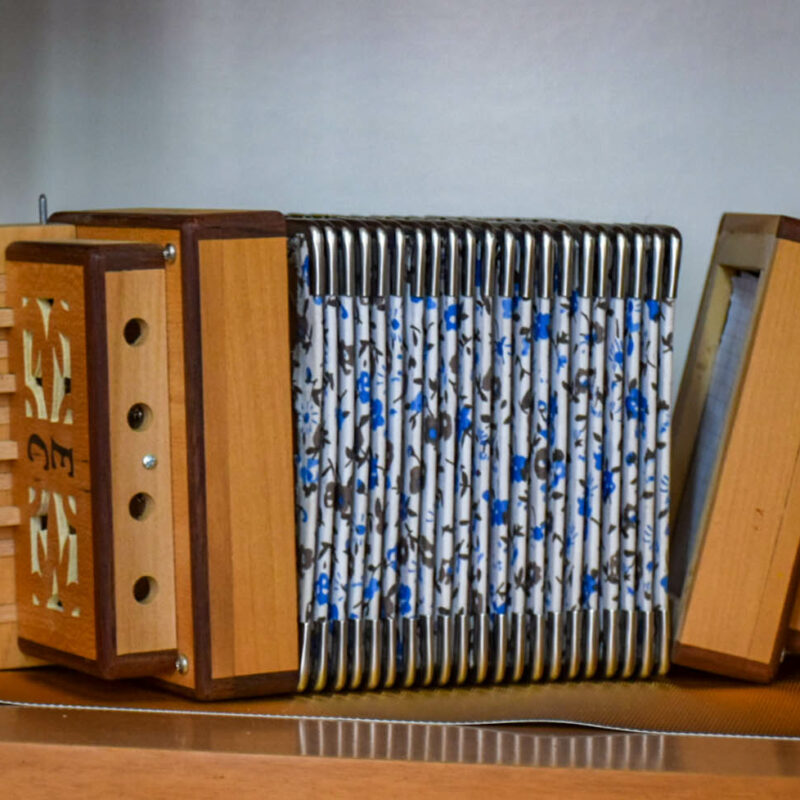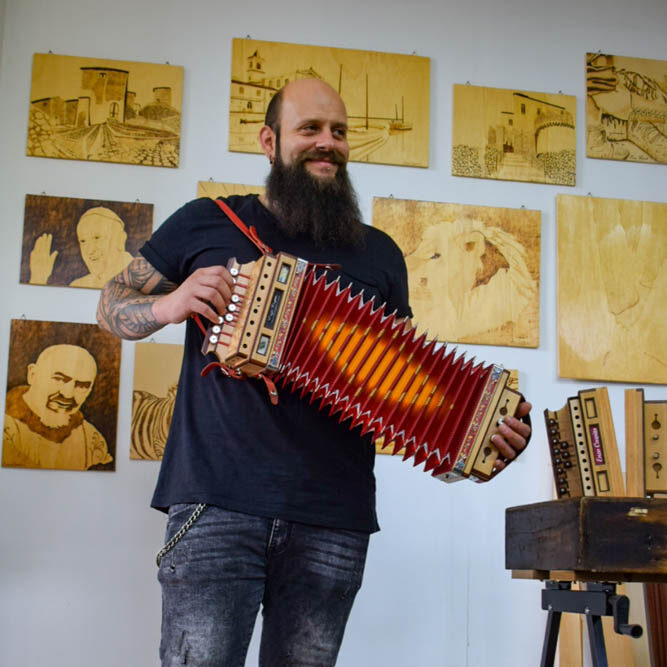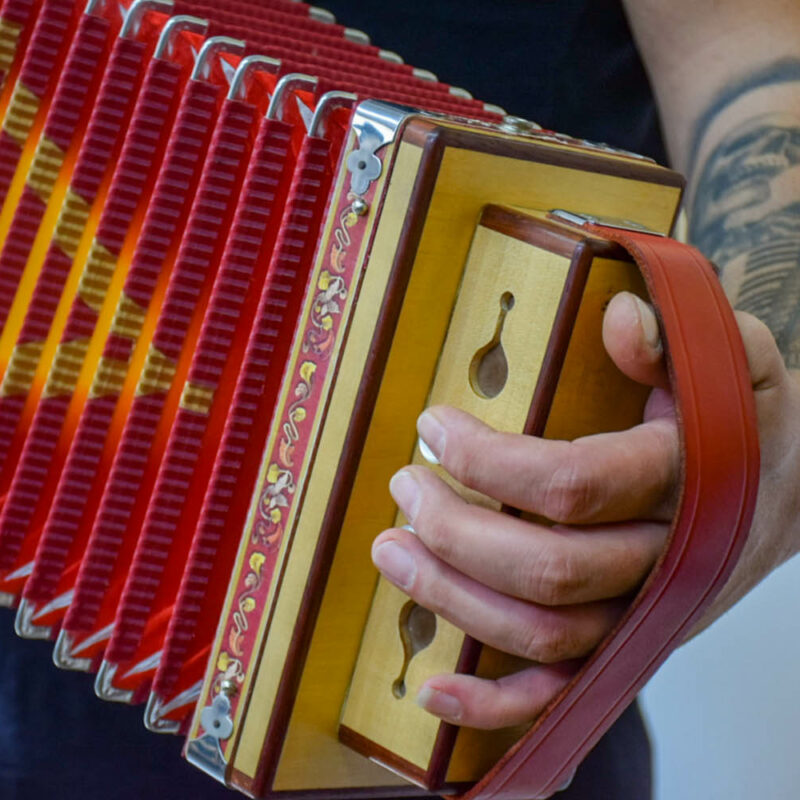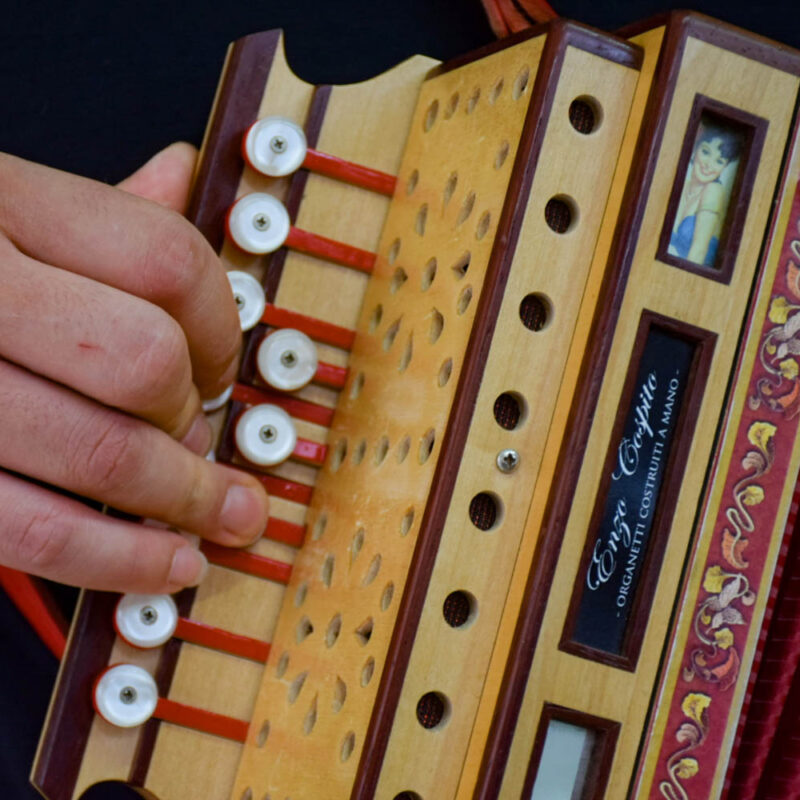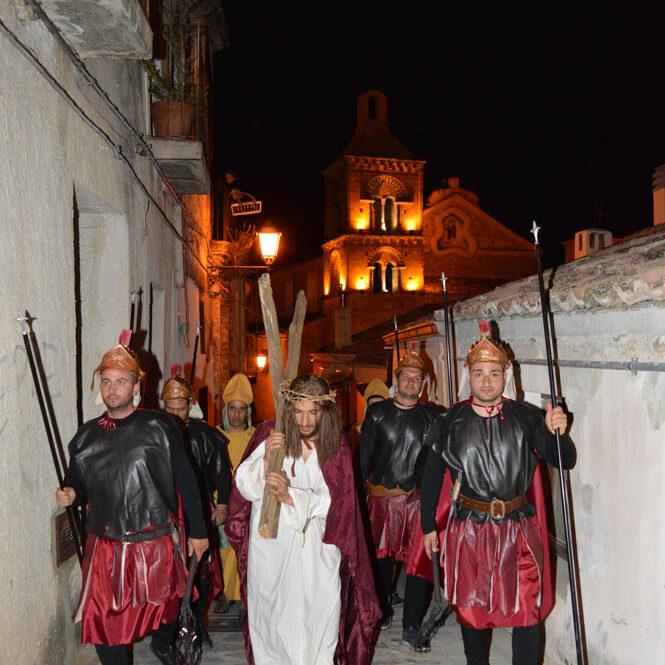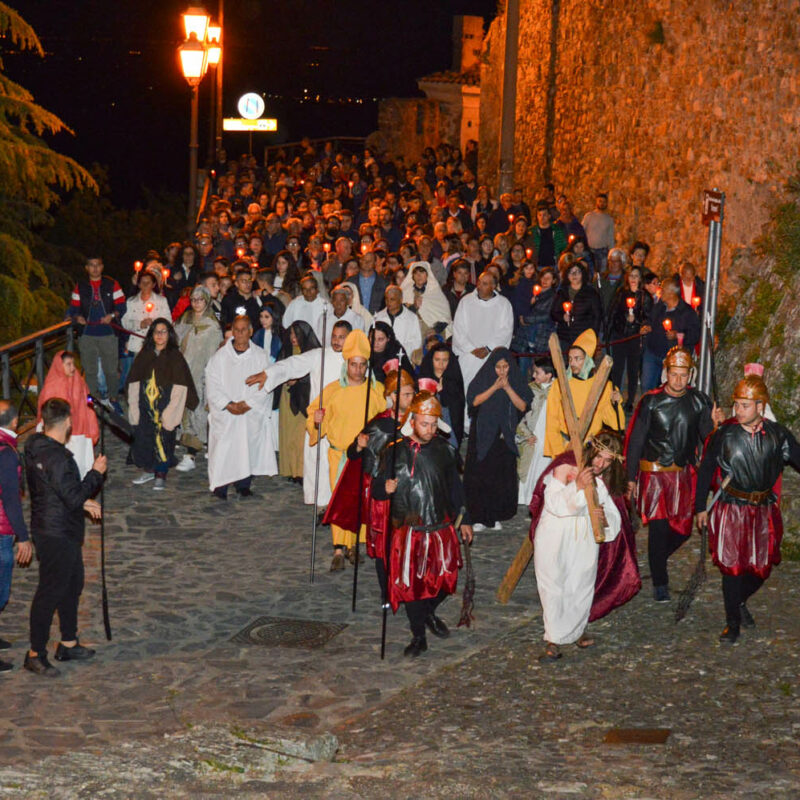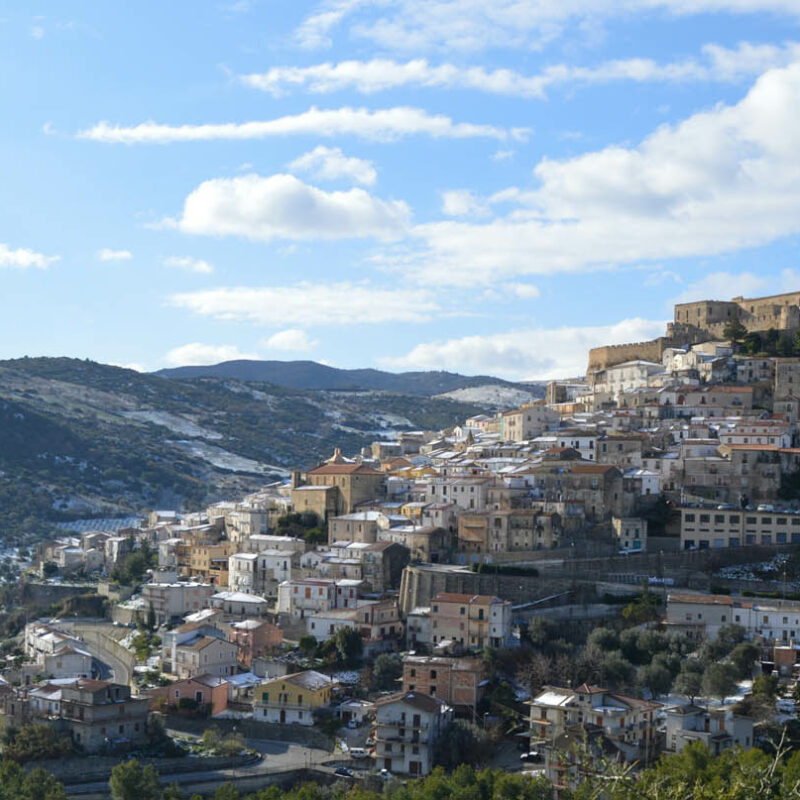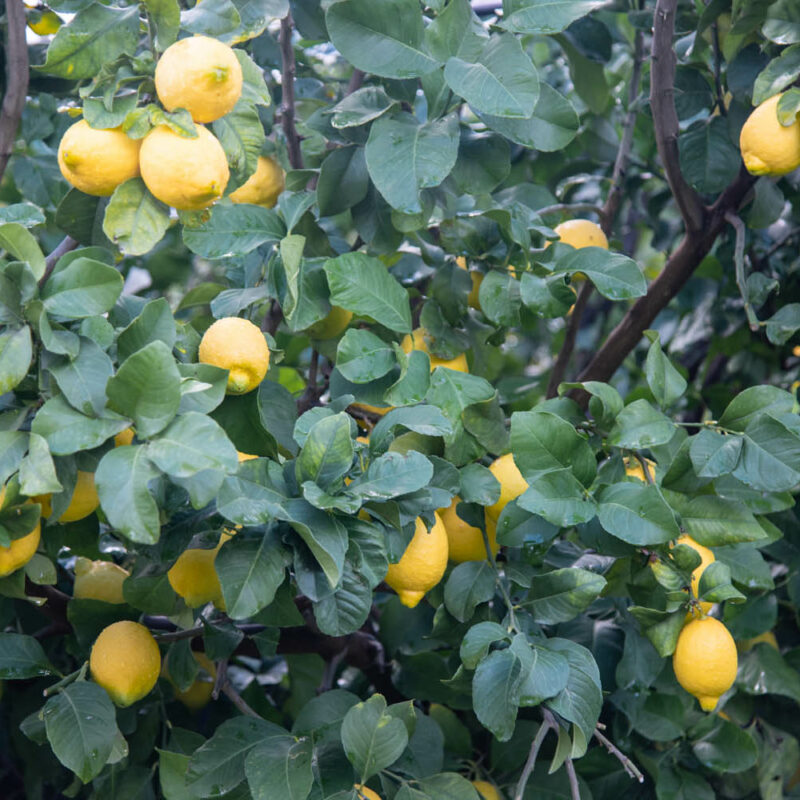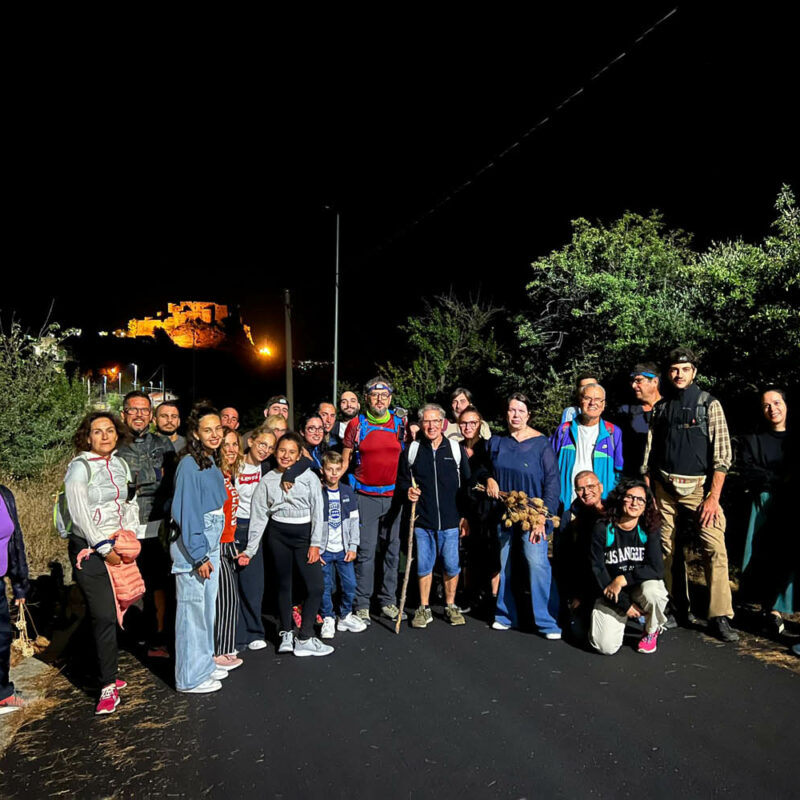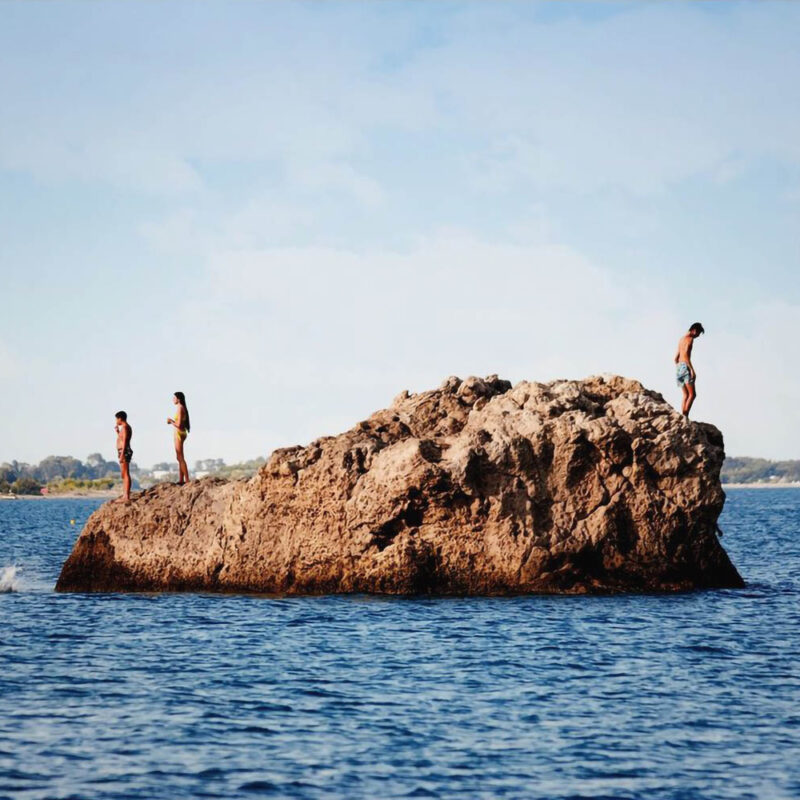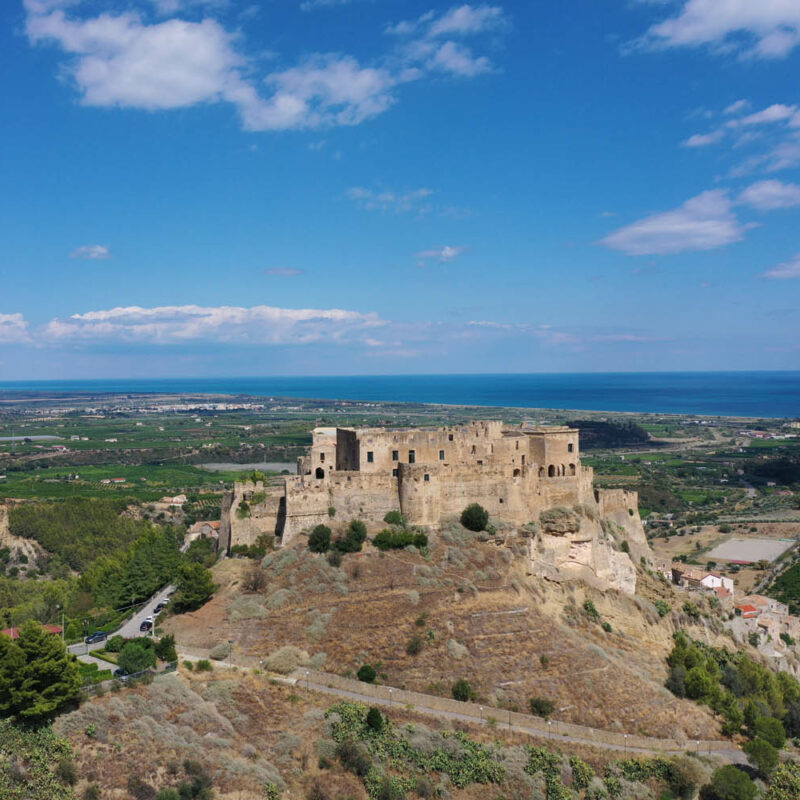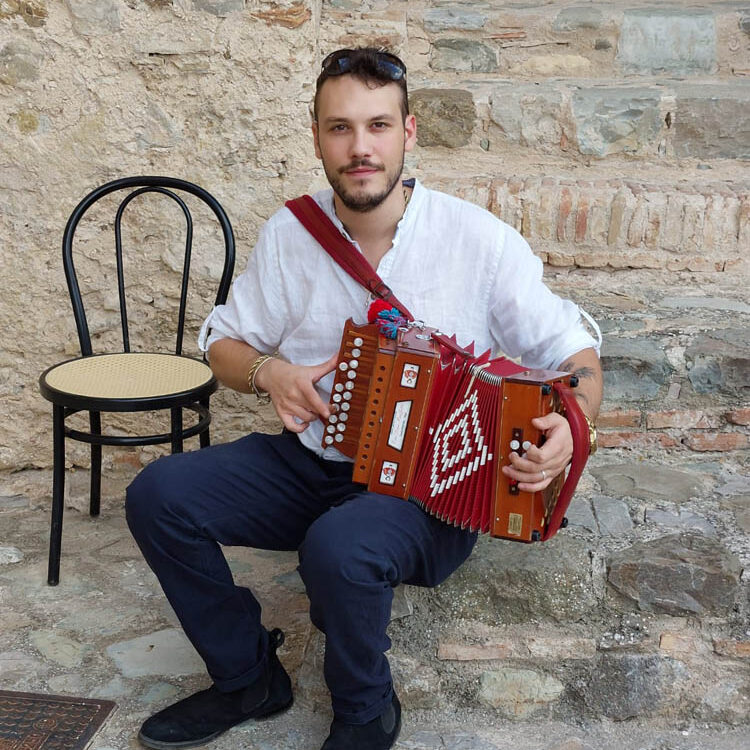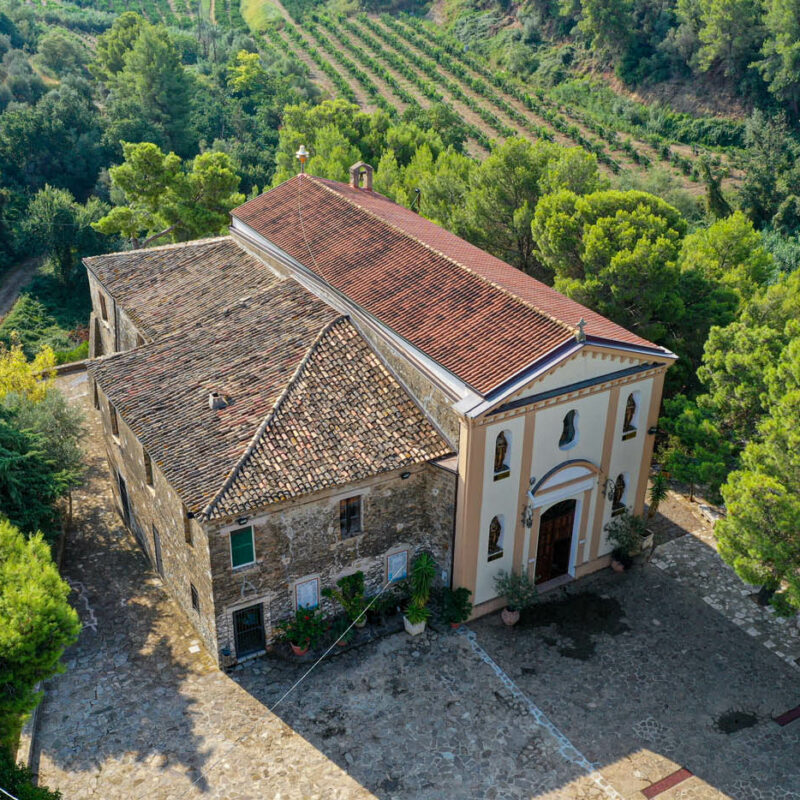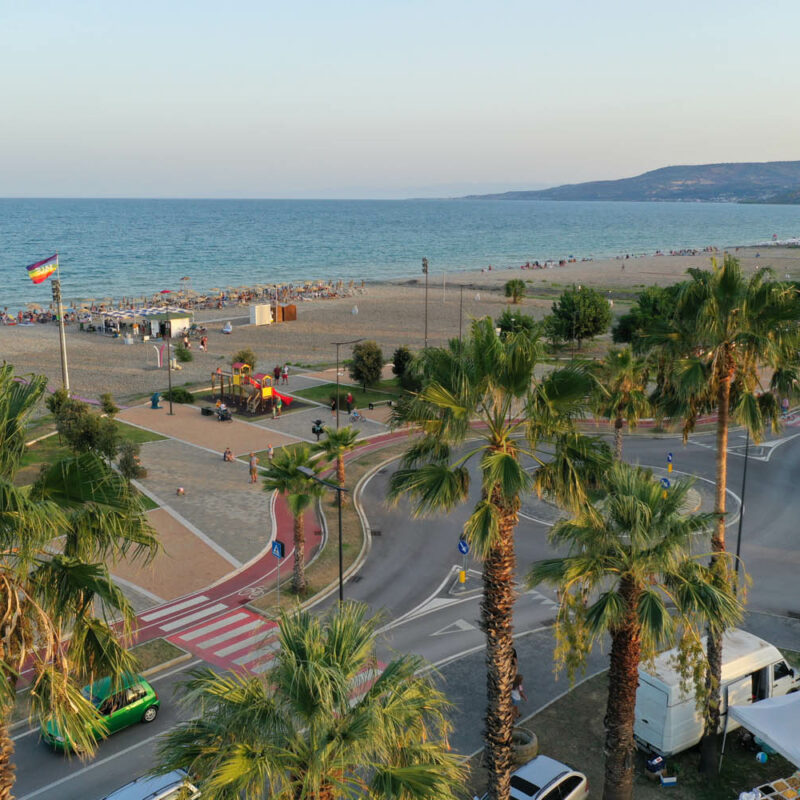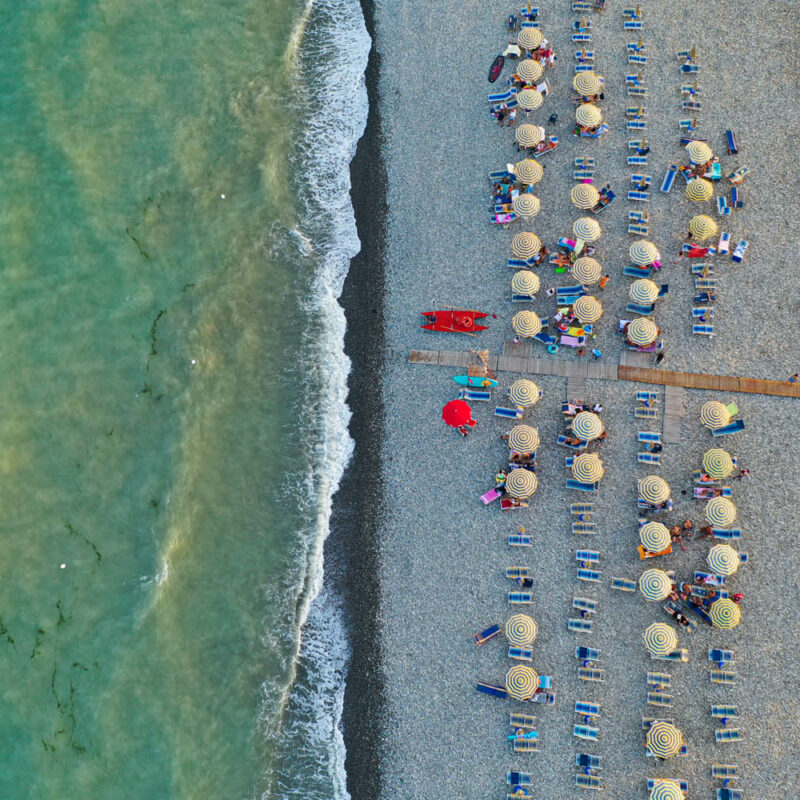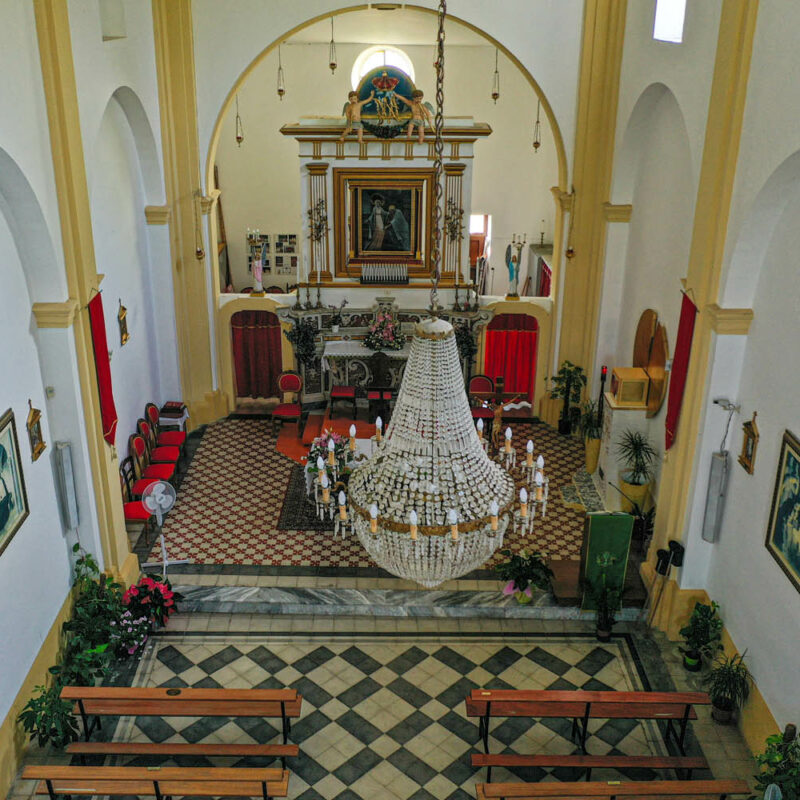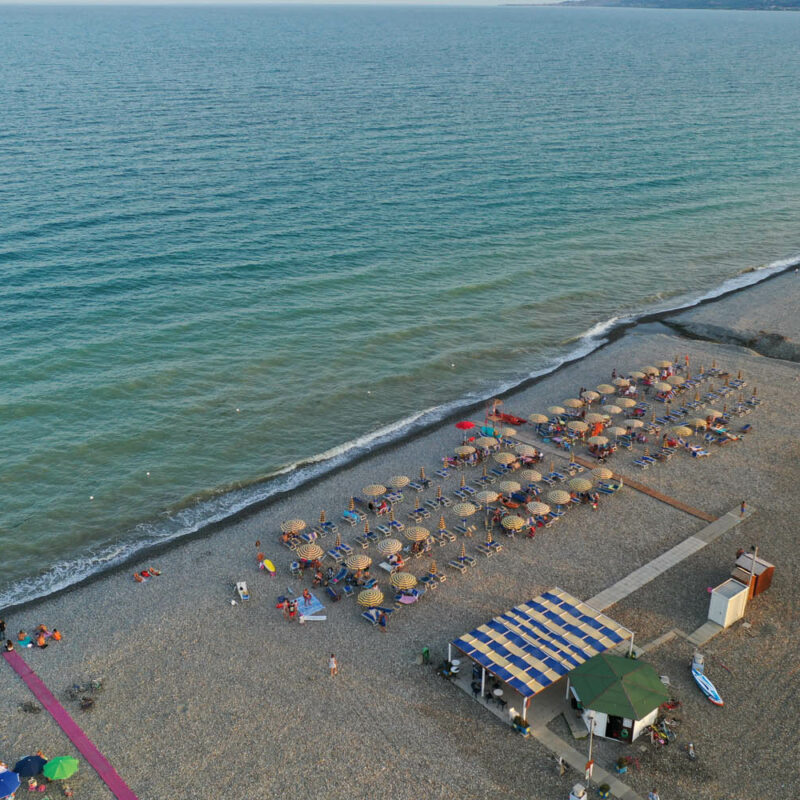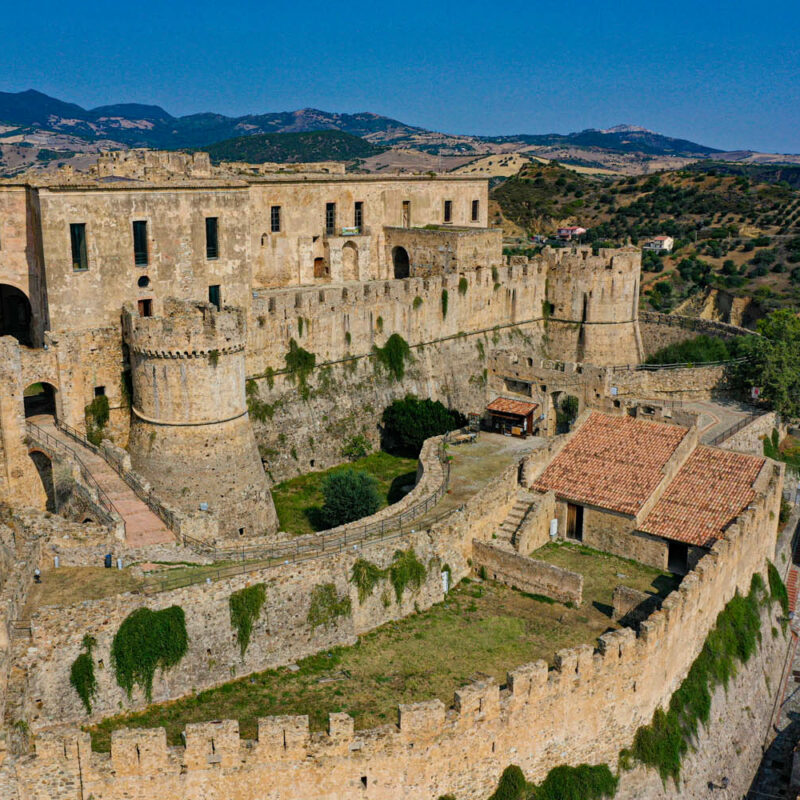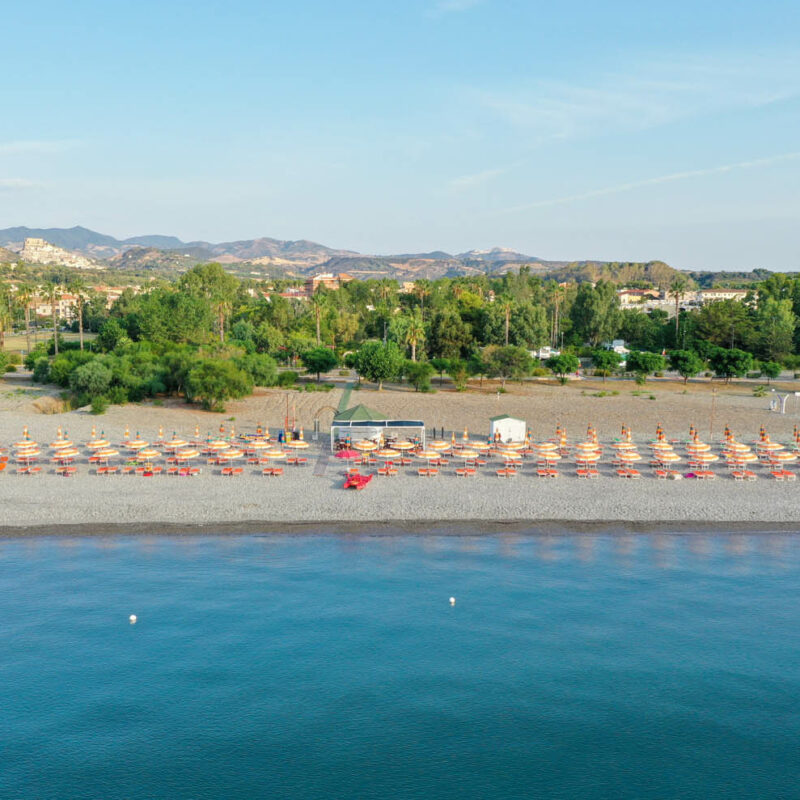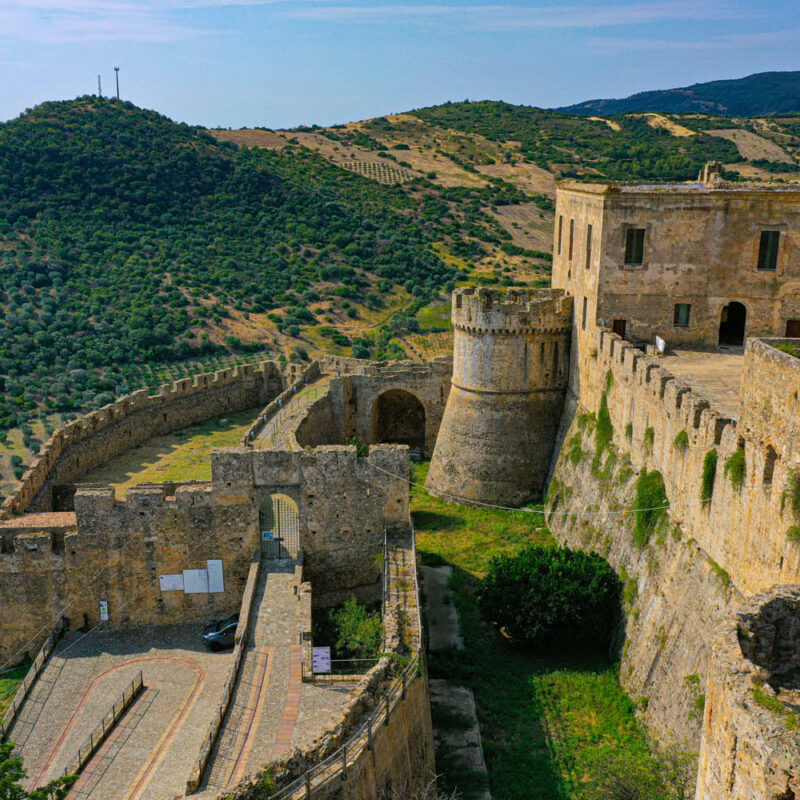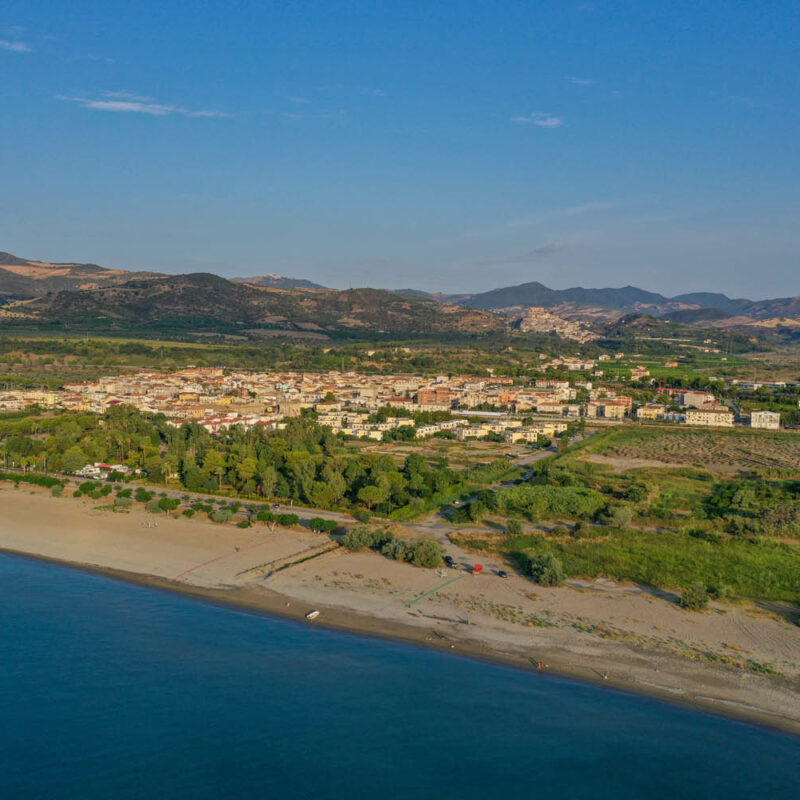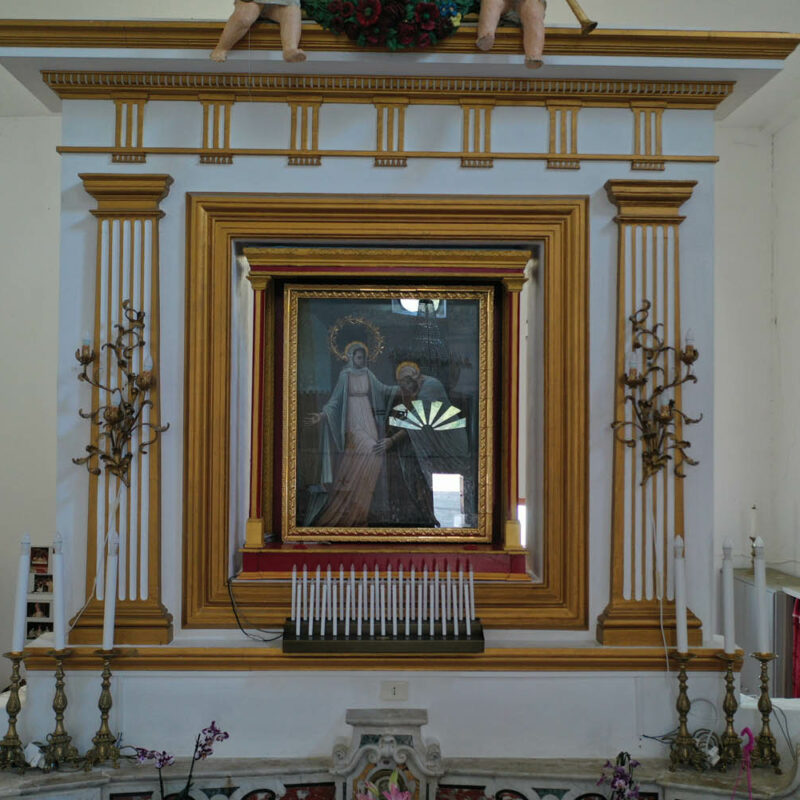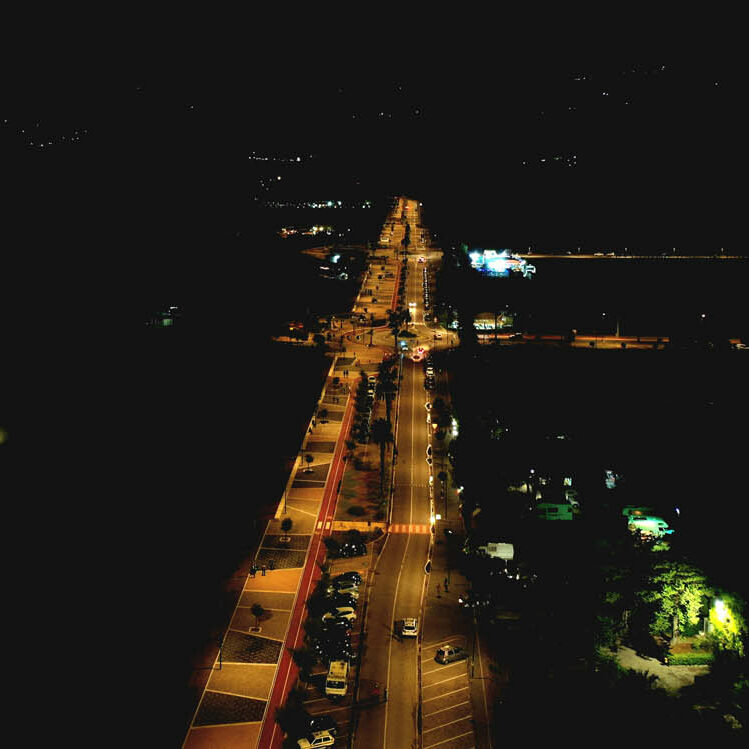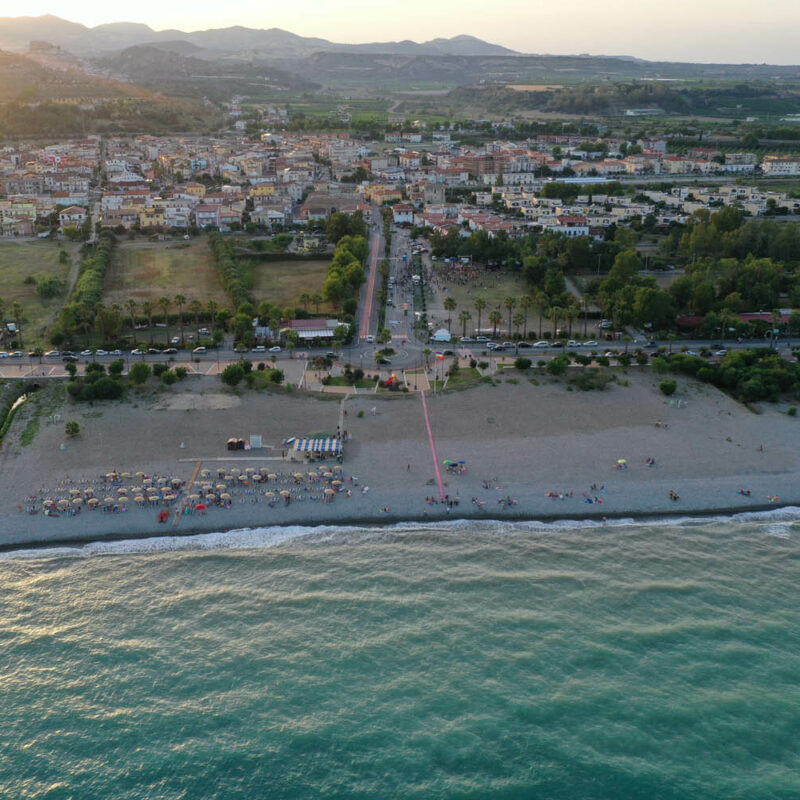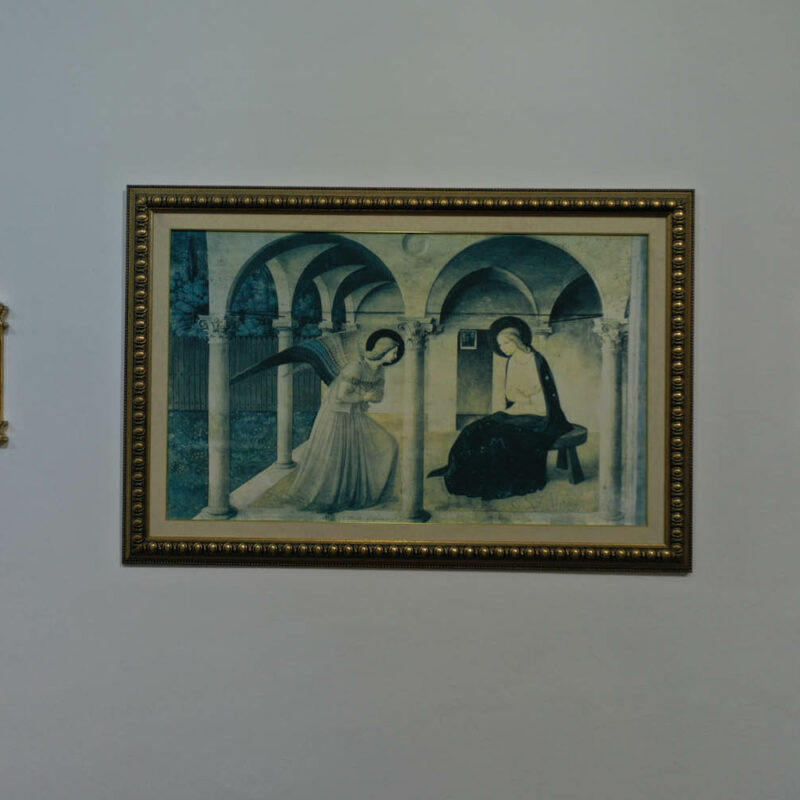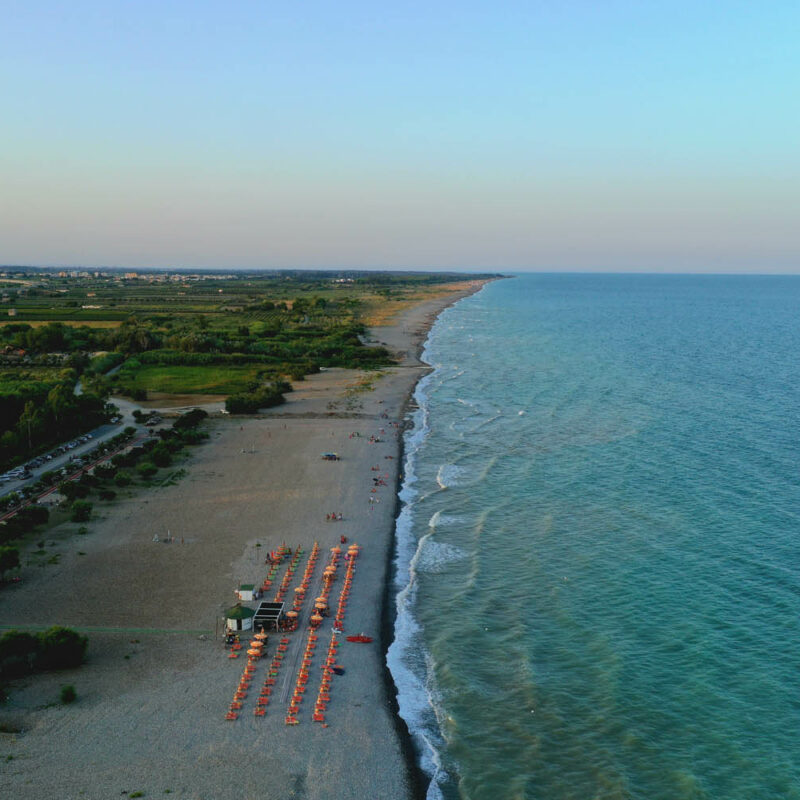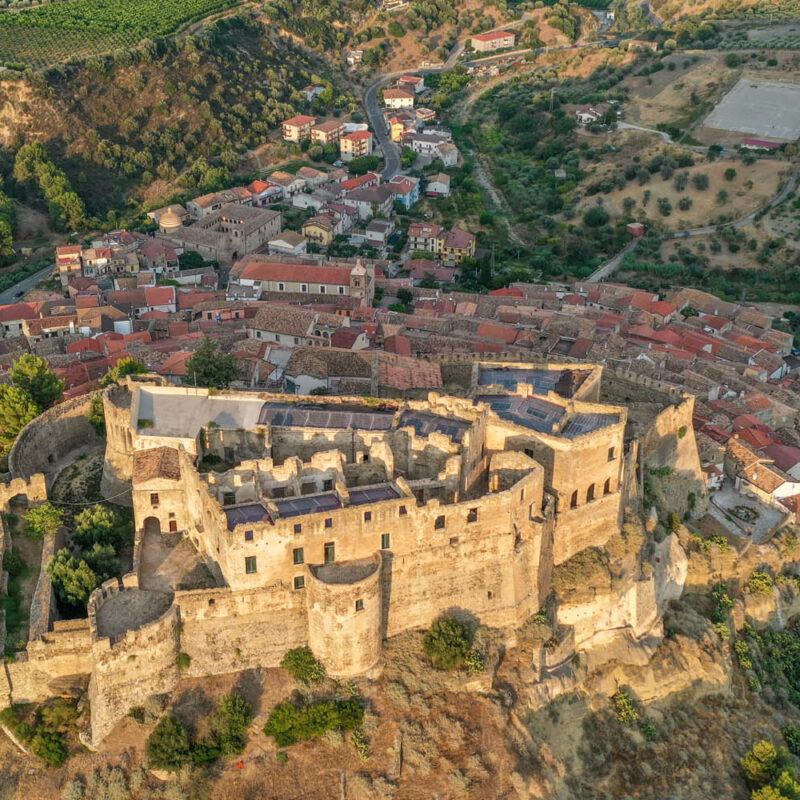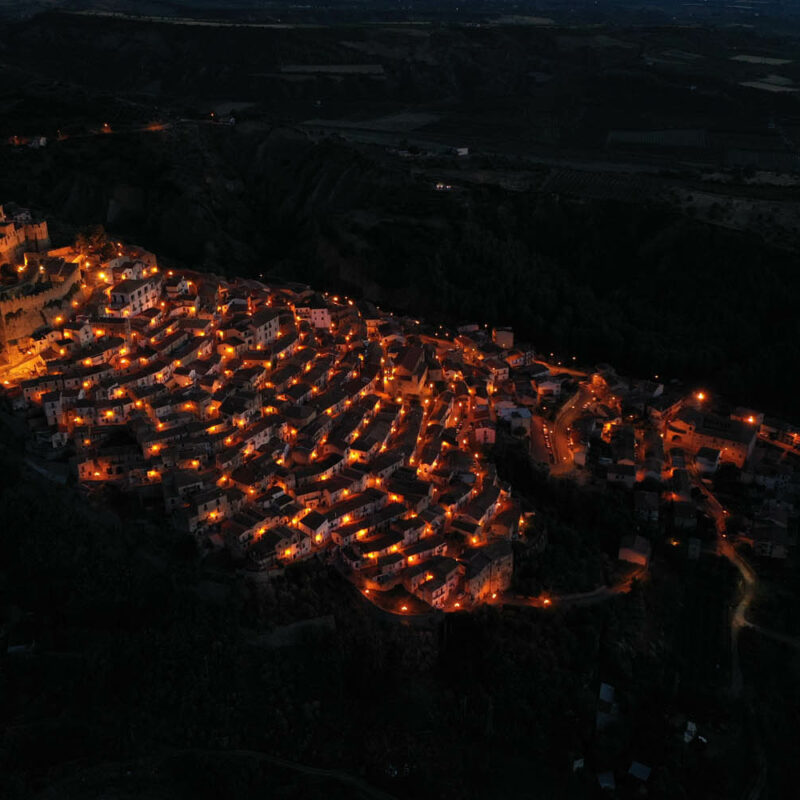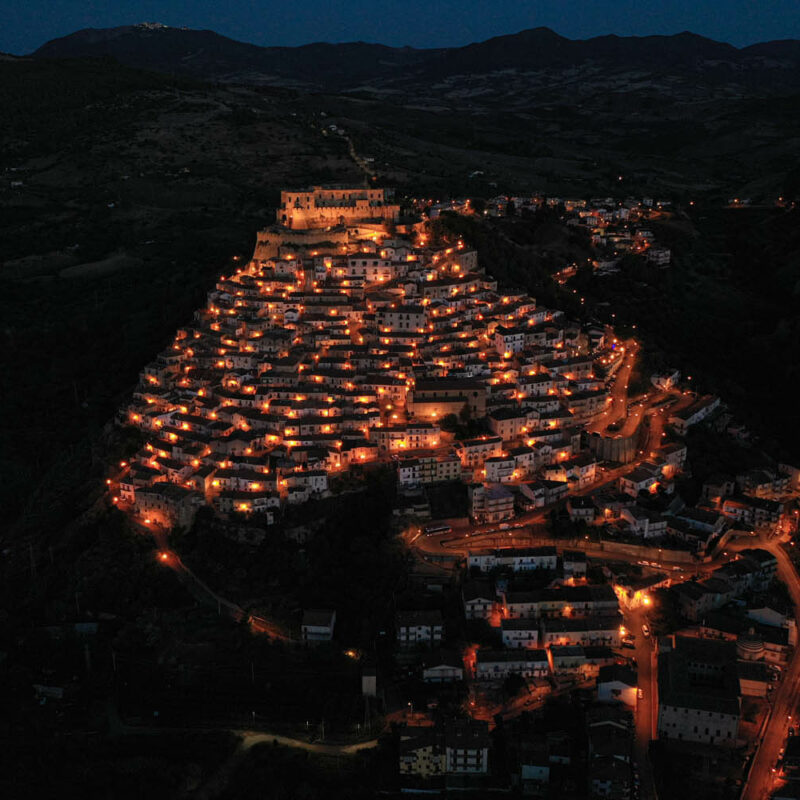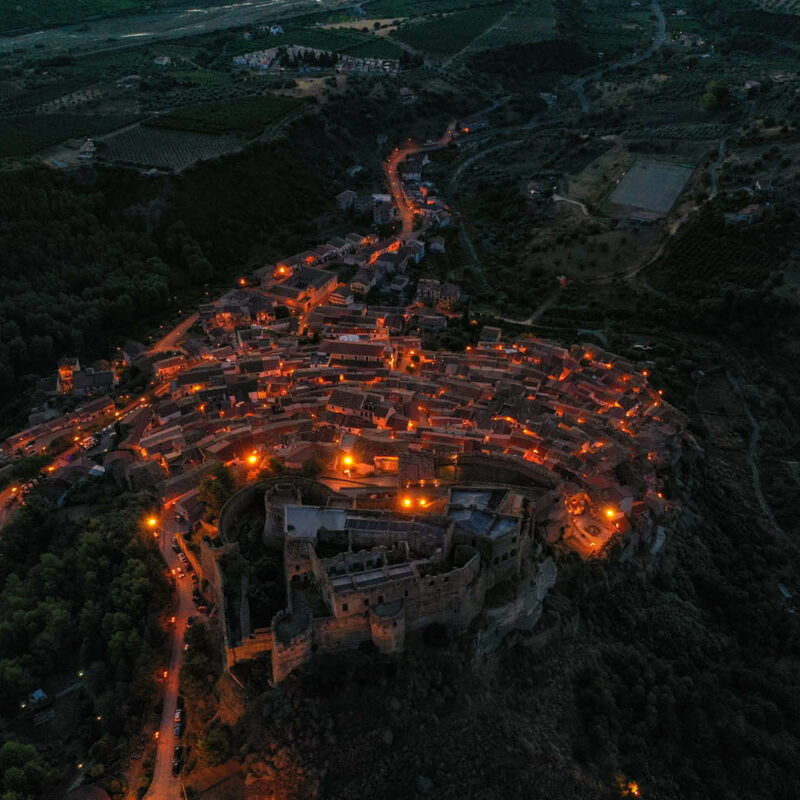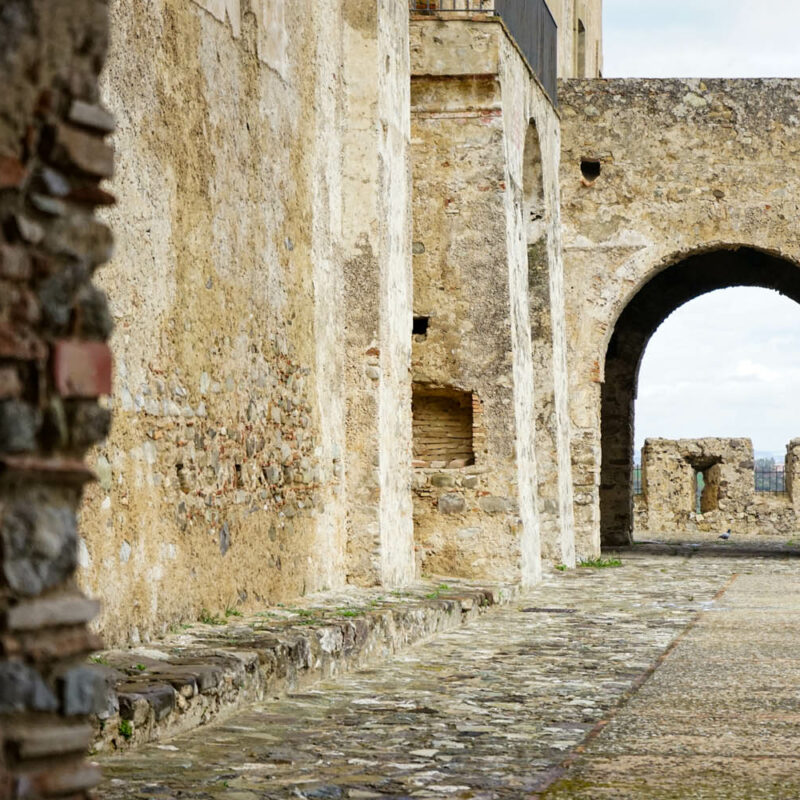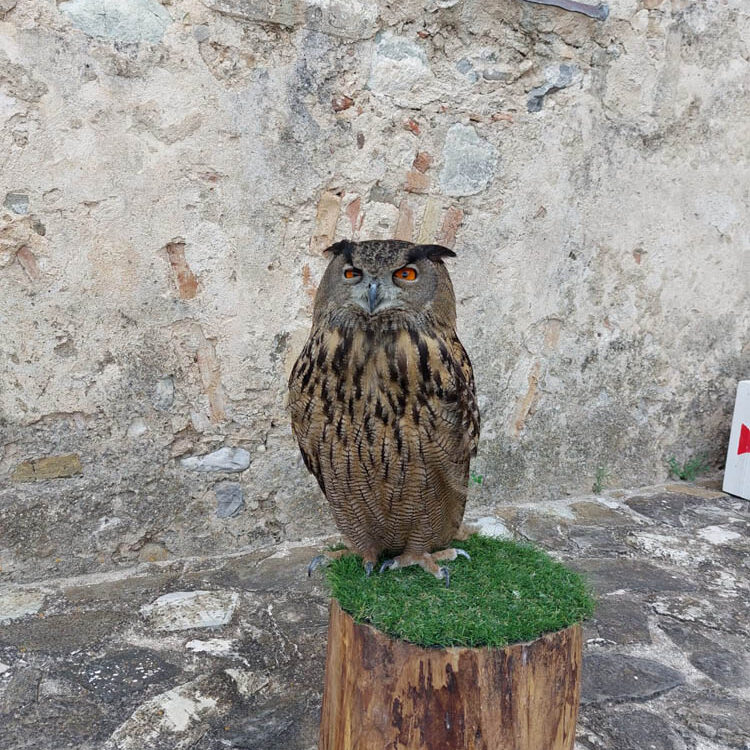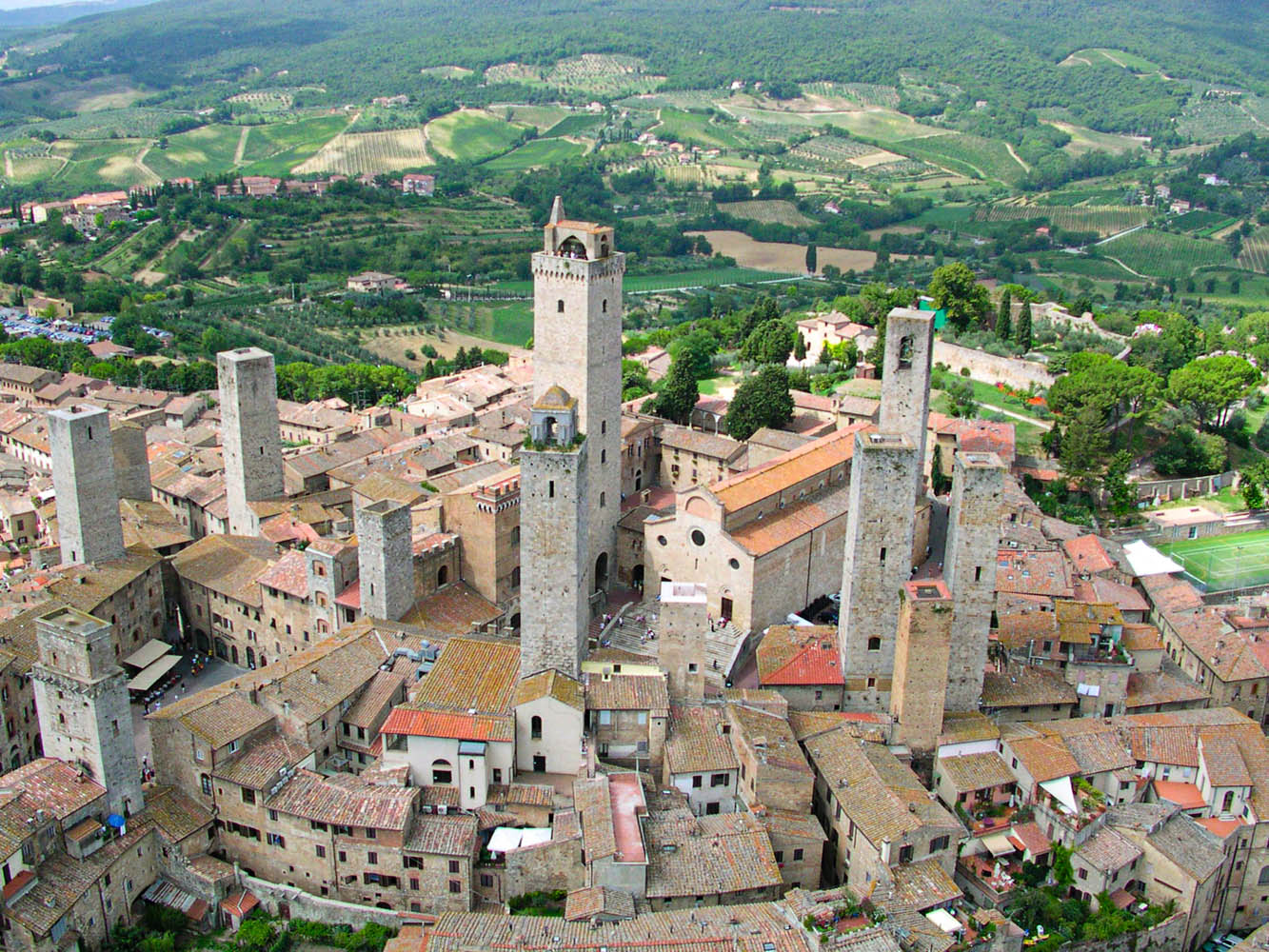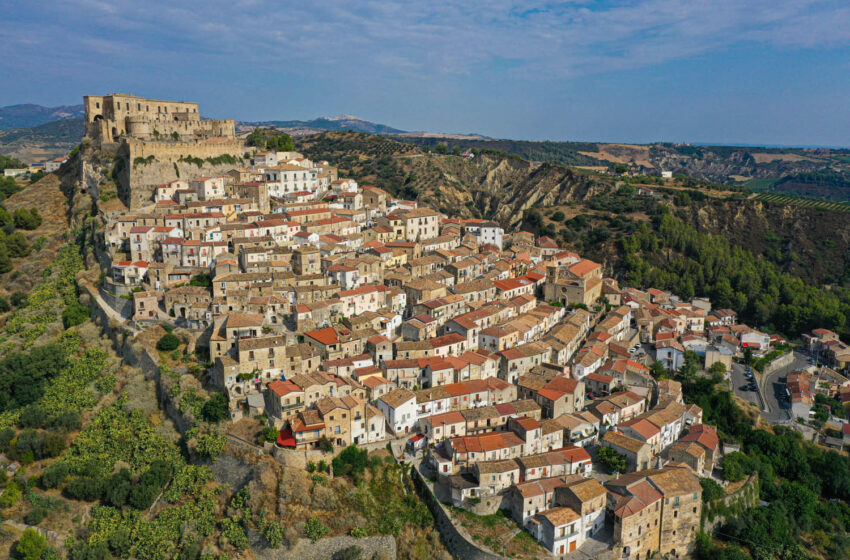
Rocca Imperiale. An enchanting village nestled between the sea and the mountains where hospitality smells like lemons.
When I first visited the enchanting town of Rocca Imperiale, three things immediately struck me. Its unique shape, resembling a pyramid sloping down towards the plain, the warm hospitality with which I was welcomed, and the intoxicating, intense scent of lemon groves, representing an excellence of the area. Rich in history and beauty, the small town in the province of Cosenza, which joined the Association of the Most Beautiful Villages in Italy in 2018, was once a place of great strategic and military importance, guarding the ancient Appia-Traiana road, a section that, starting from Reggio Calabria and continuing along the Ionic road, rejoined the Ancient Appian Way in Brindisi.
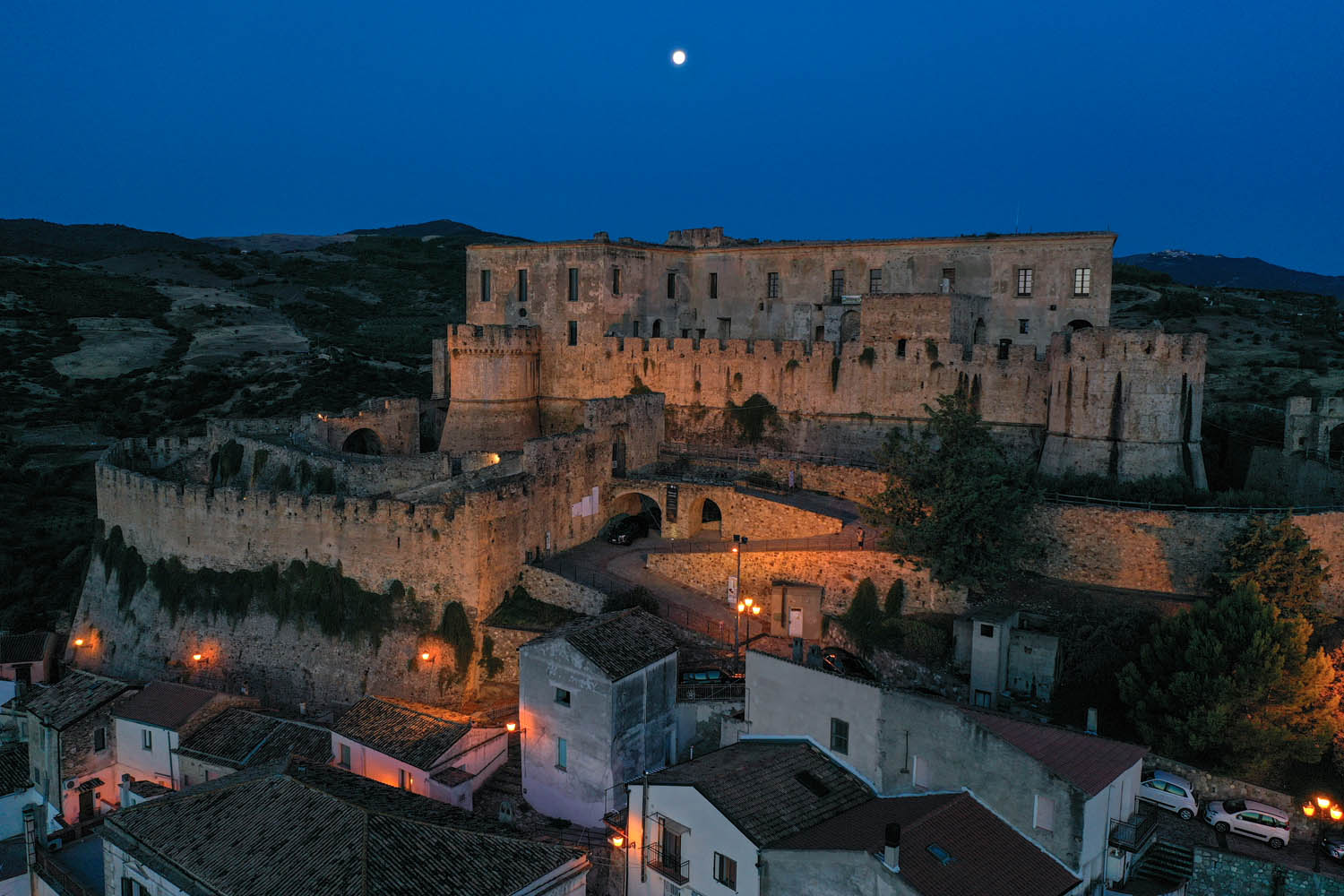
The name Rocca Imperiale reminds us of the role it continued to play in the Middle Ages when Frederick II, the stupor mundi, had the imposing castle built, which dominates with its austere forms the summit of the hill from which the characteristic houses radiate down to the valley. Walking through its streets is always a unique experience because of the wonderful people one meets, warmly hospitable and ready to tell the stories of local tradition, the beauty of its sacred buildings, such as the Mother Church, dating back to the Frederickian empire, adorned with a magnificent wooden altarpiece from the seventeenth century, the sanctuary of Madonna della Nova, protector of Rocca Imperiale, and other churches that house significant artistic treasures.
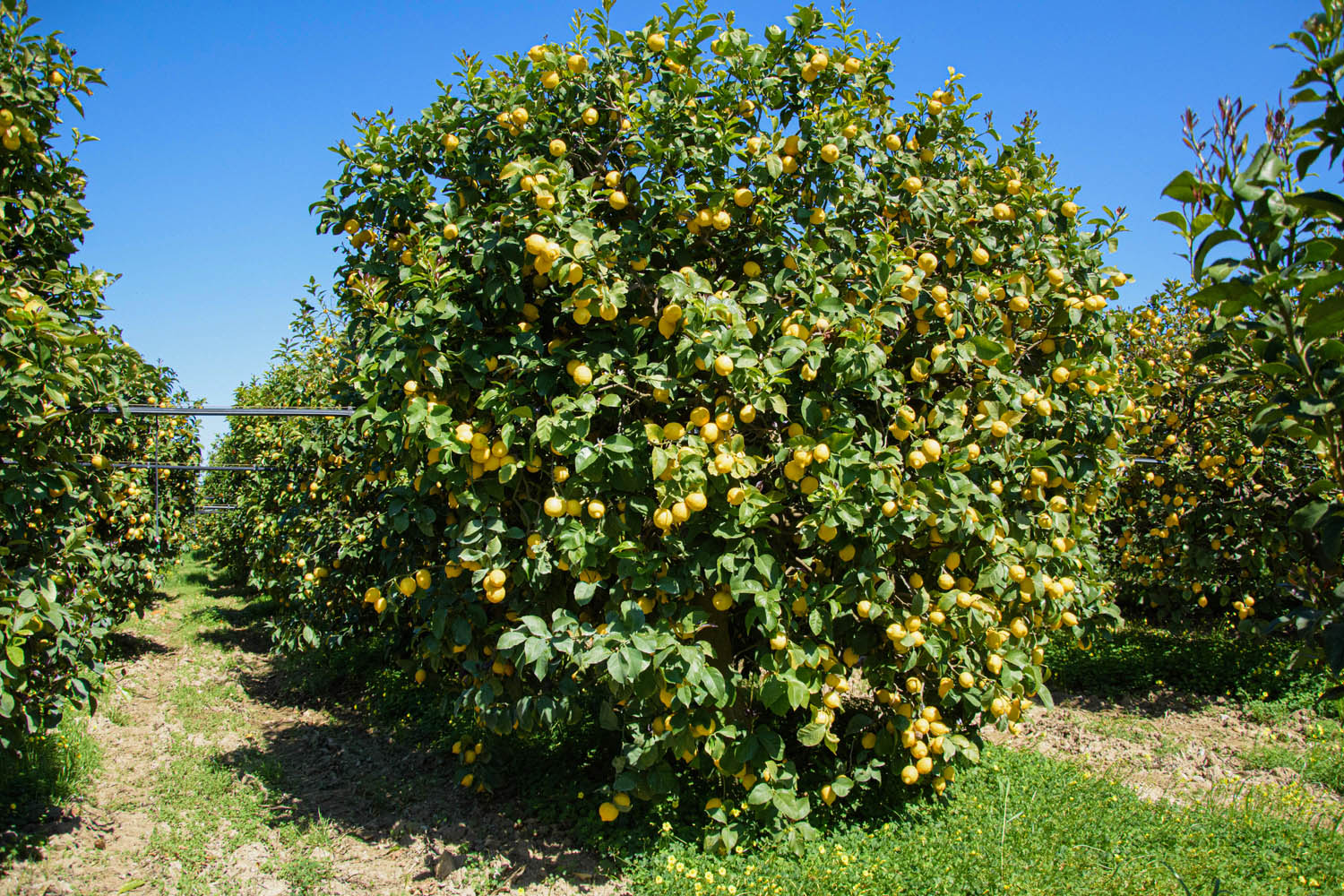
Making the visit even more enchanting is the delightful scent of lemons that literally envelops the village, an excellence resulting from centuries of wisdom, from which an excellent limoncello is obtained. The PGI lemon of Rocca Imperiale is almost seedless, states the President of the Protection Consortium, Vincenzo Marino, with a peel rich in essential oils, including limonene, which gives it an intense and persistent aroma. The first cultivations date back to the Frederickian era, and the prized citrus fruit has now become a fundamental ingredient both in cuisine and cosmetics. In August, every year, there’s the eagerly awaited Lemon Fest, an event featuring “Frederick’s gold,” a rich three-day event that takes place both in the village and along the promenade. Stands not only with lemon-based products and typical local products but also food and wine, street artists, live music, theatrical performances, and concerts.
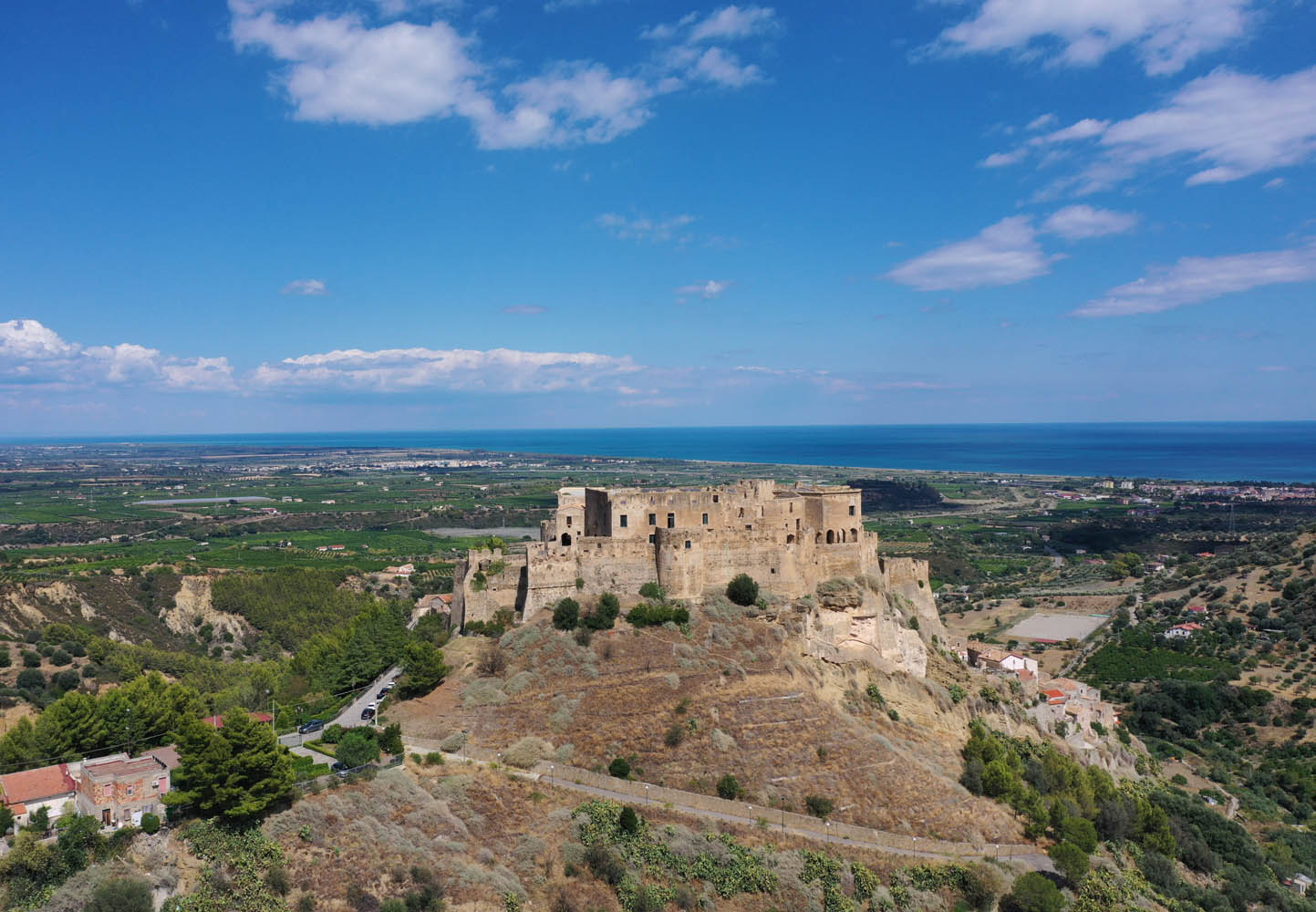
The historic center is dominated by the mighty and mysterious castle. It is said that among the rooms of the ancient fortress wanders “the white lady,” a woman dressed in white who could be the daughter of Duke Crivelli, who committed suicide from the balcony overlooking the parade ground. The Castle, one of the largest in southern Italy, was built in 1225 by the young Emperor Frederick II of Swabia. 2024 is the year of roots and returning tourism, a unique opportunity also for the numerous Calabrians residing abroad who fulfill their dream of revisiting the castle completed after the recent restoration, again visitable from next May. Its Aragonese towers, the city walls, the eighteenth-century palace, and the lights that, in the evening, together with the suggestive lighting of the historic center, make it resemble a nativity scene, are surprising.
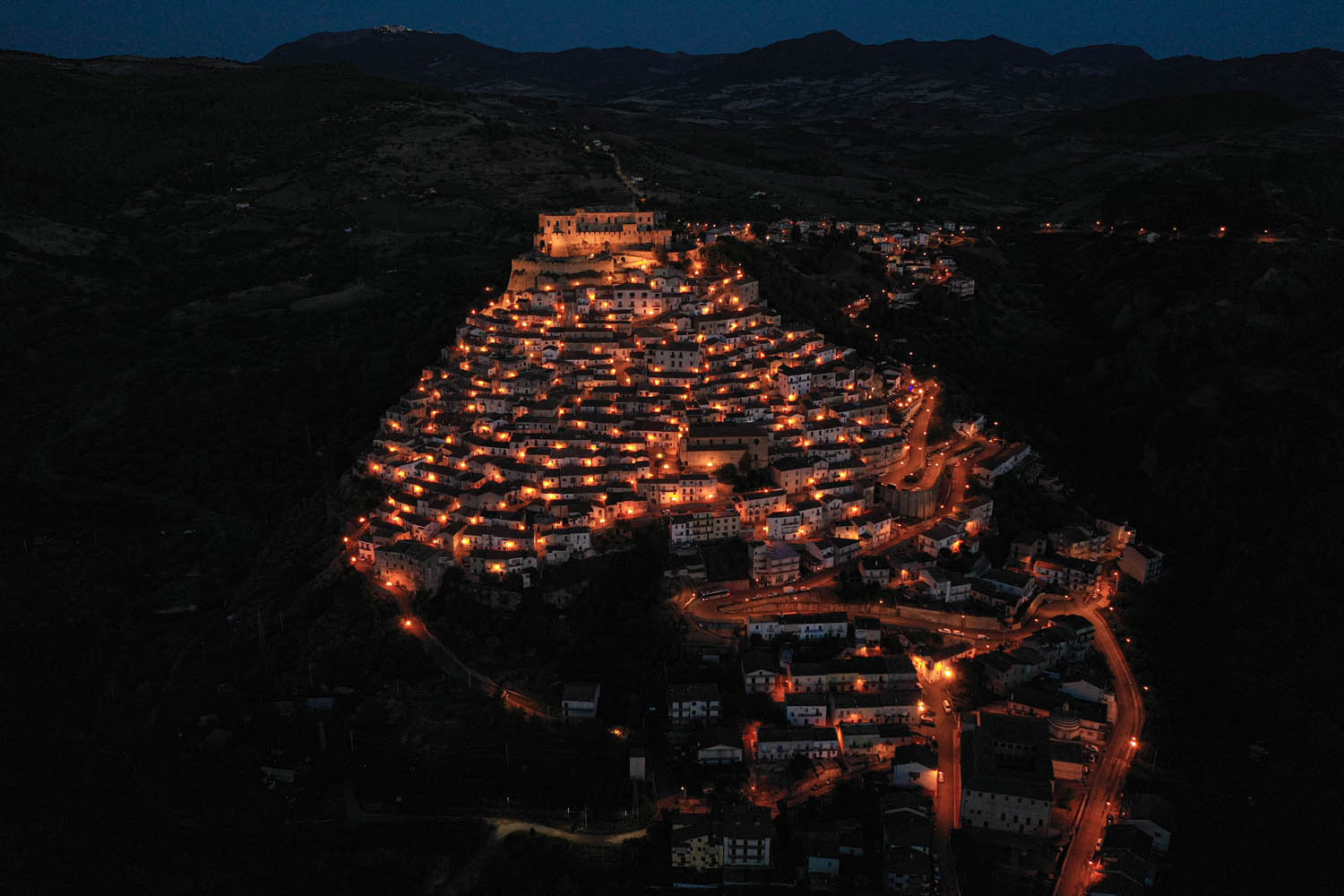
Guided tours are enriched by events such as the falconry show with performances by falconry masters, in honor of that Frederick to whom the inhabitants continue to be particularly attached, which takes place in July and September, and medieval day where volunteers from the Cultural Association Fidem Artem Aps welcome visitors in medieval dress, accompanying them in the discovery of the place.
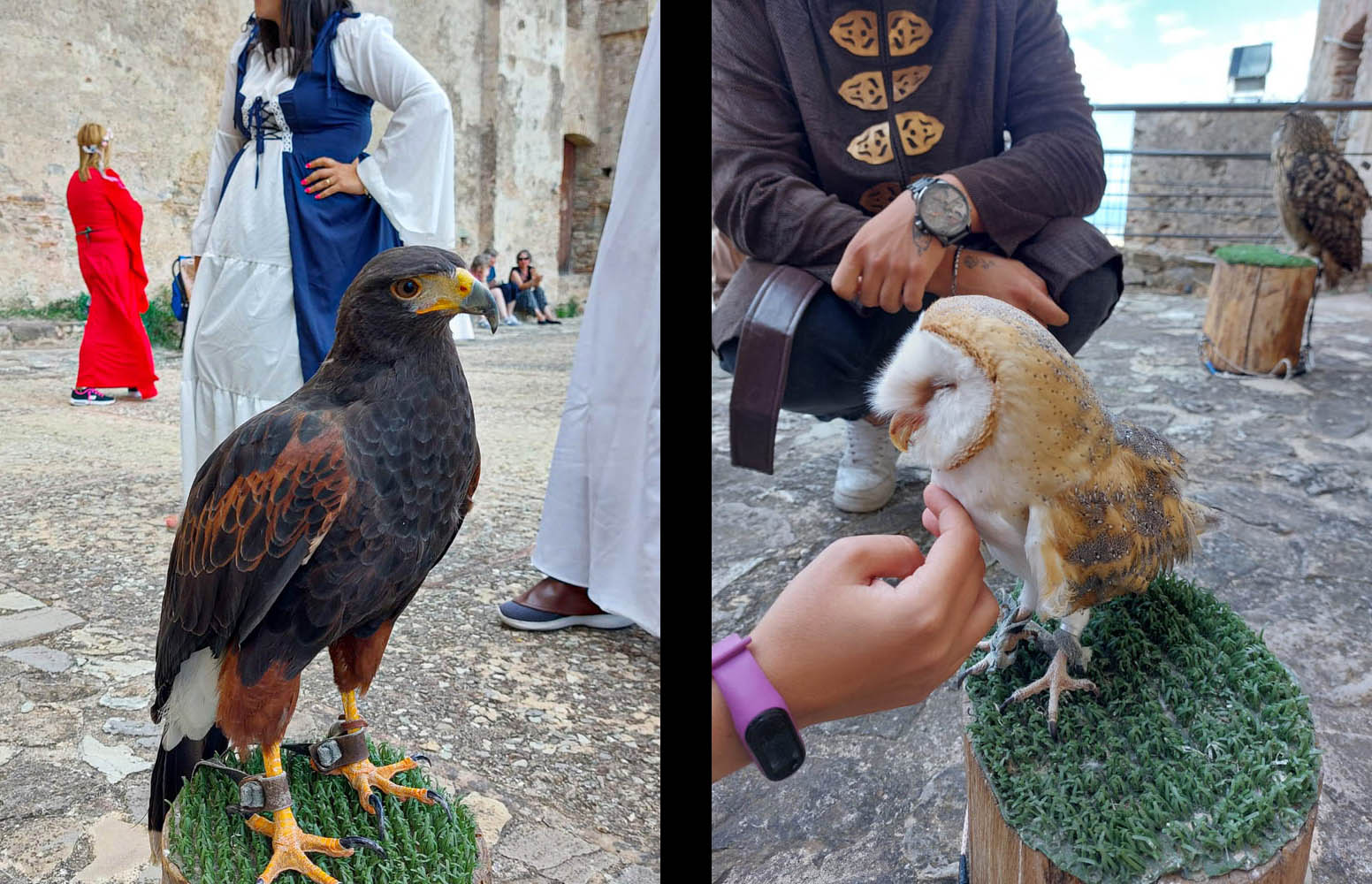
“Together with my team, my guys, as I like to call them,” says Annalisa Lacanna, President of the association, “we want to convey emotions and values to our guests in these magical settings where you can go back in time, among the castle walls and the alleys of the village, to immerse yourself in distant atmospheres that tell a long and captivating story.” In the Swabian castle, various educational workshops are organized: ceramics, ancient coroplastics, creation of ornaments for medieval knights and ladies, educational games, theatrical workshop in costume, and the appointment of medieval knights and ladies, medieval archery and falconry, treasure hunt in the castle.
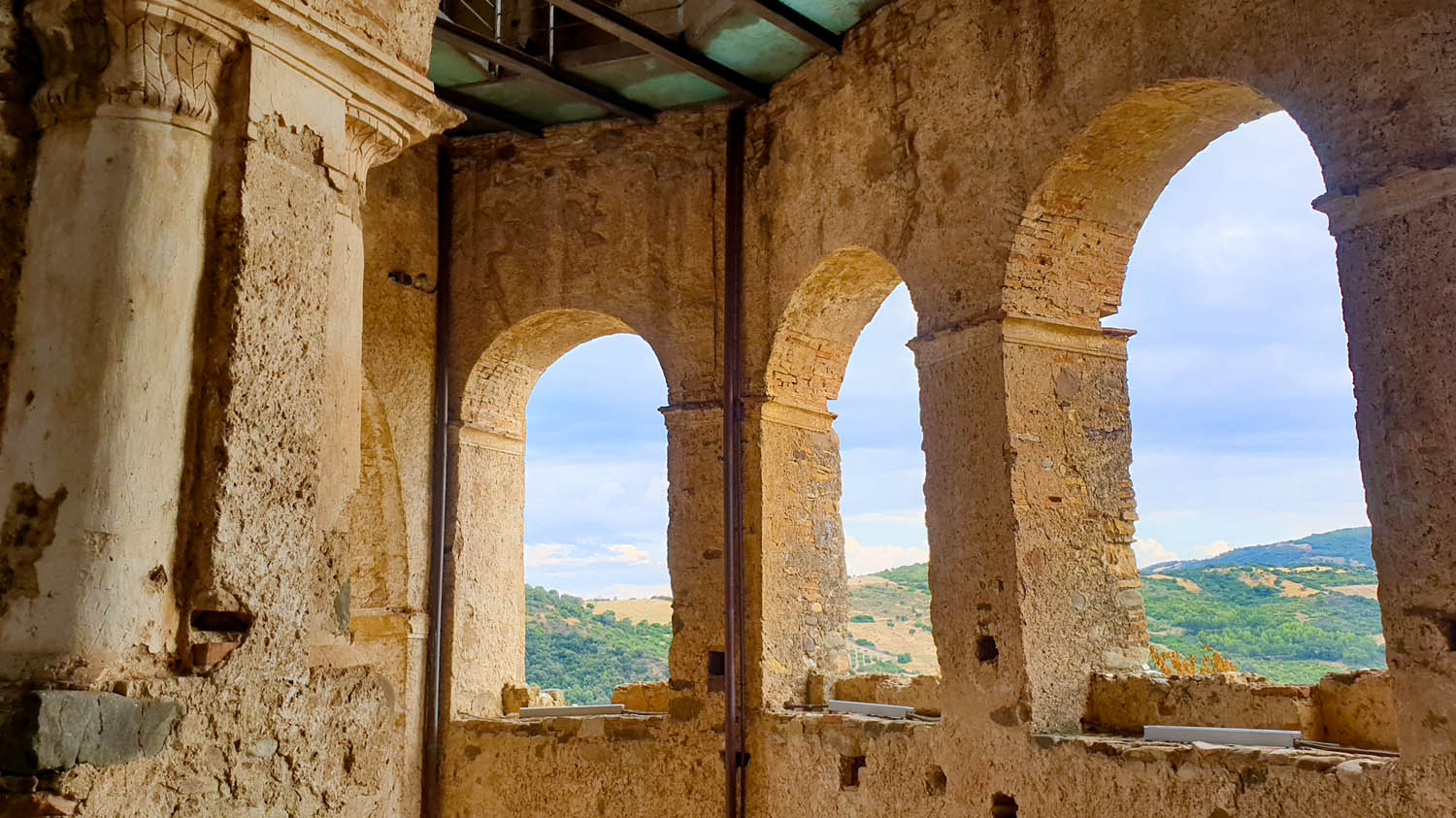
In addition to the castle, the village can also be visited with local guides. True art jewels are the precious churches: San Francesco from 1600, San Giovanni Battista from 1400, the suggestive Mother Church dedicated to Santa Maria Assunta in Heaven built in 1239, from the Frederickian era. Inside, the Crucifix, miraculous for the people, which on March 30 of each year the faithful carry in procession through the streets of the village.
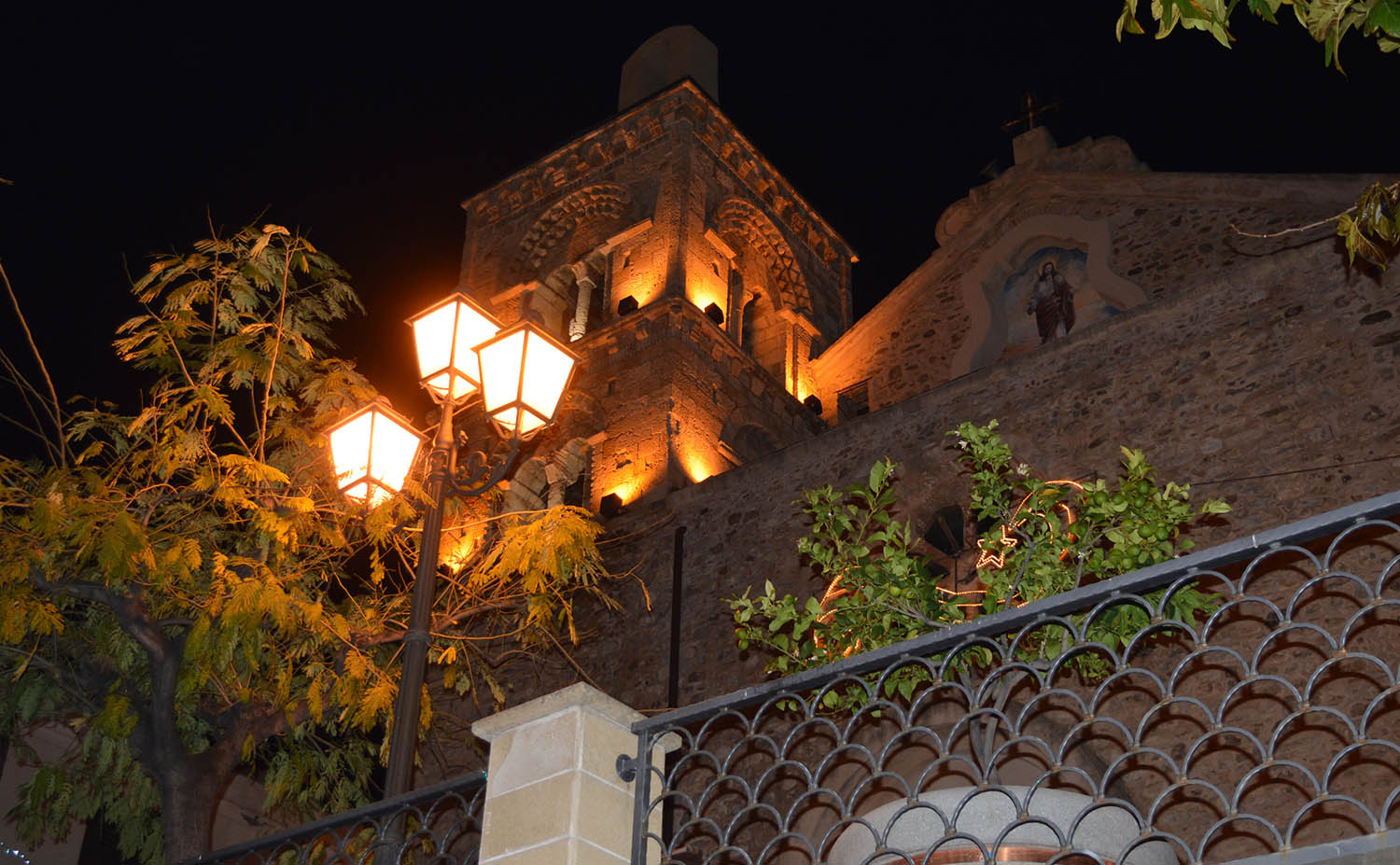
Another very felt tradition is dedicated to the Madonna della Nova, Patroness of the city since 1644, the year in which she granted grace to the people of Rocca Imperiale besieged by the Turks. Every year, a week after Easter, the faithful transfer, carrying it in procession, a painting depicting her. They leave from the Mother Church and arrive at the Sanctuary of Madonna della Nova, built in 1400 by a pilgrim prince, where the painting will remain until July 1, a day of celebrations and prayers, to be brought back, on July 2, to its home.
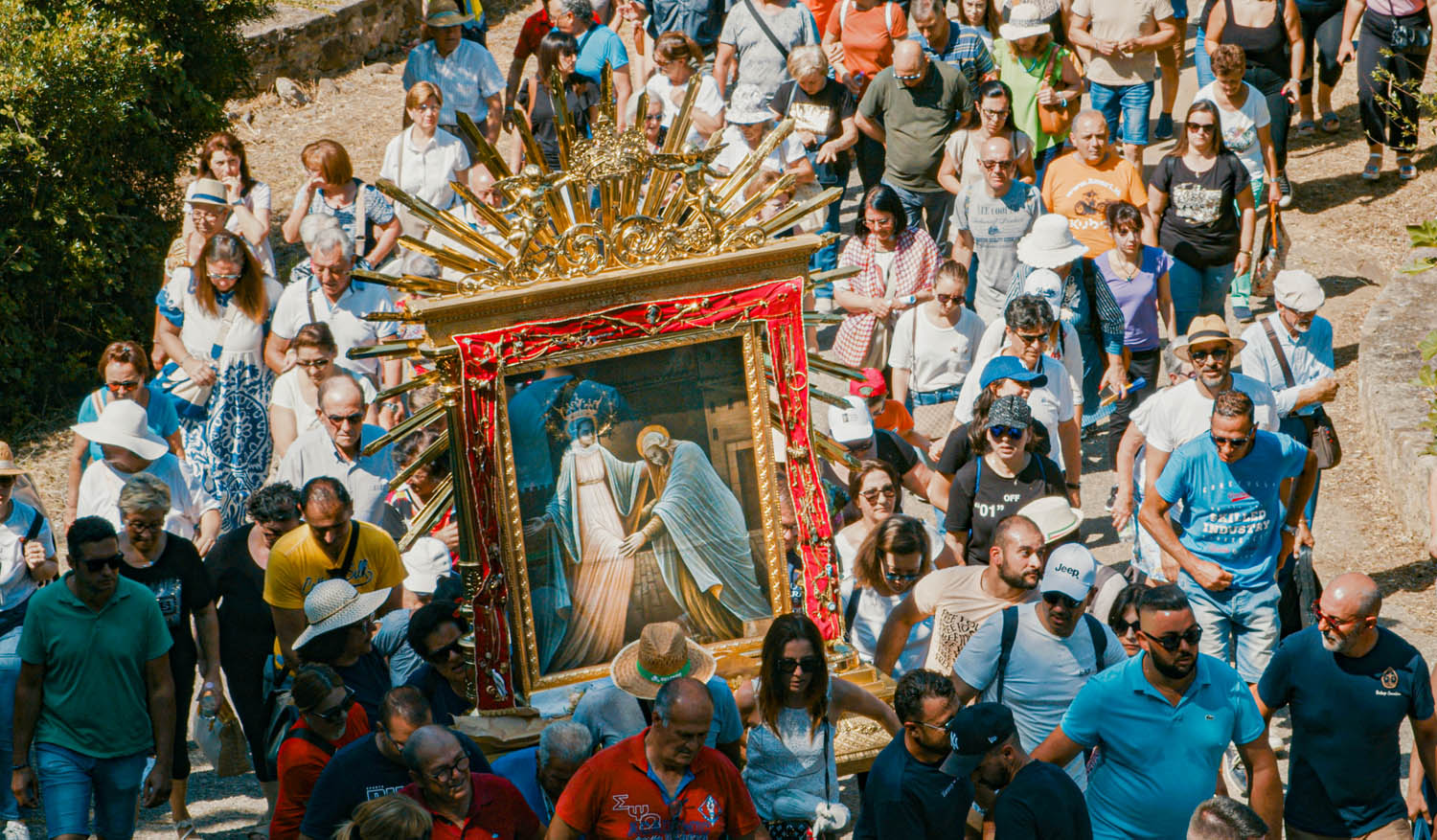
Next is the chapel of the Madonna del Carmine from 1600. The last church is that of Sant’Antonio di Padova, inside the Monastery of the Observant Friars of 1500, which houses the interesting Wax Museum. During the walk in the village, one also stops to admire the streets dedicated to the virtues and vices of Frederick II and proposes a fun game: to manage to cross these narrow alleys, including the smallest one of 36 cm. On Sundays and in July and August, there is the event “ancient crafts,” from the baker to the cobbler, from the washerwoman to the women who prepare homemade pasta, and the suggestive evening tour that, from the castle, crosses the village and reaches the forest: a unique emotion.
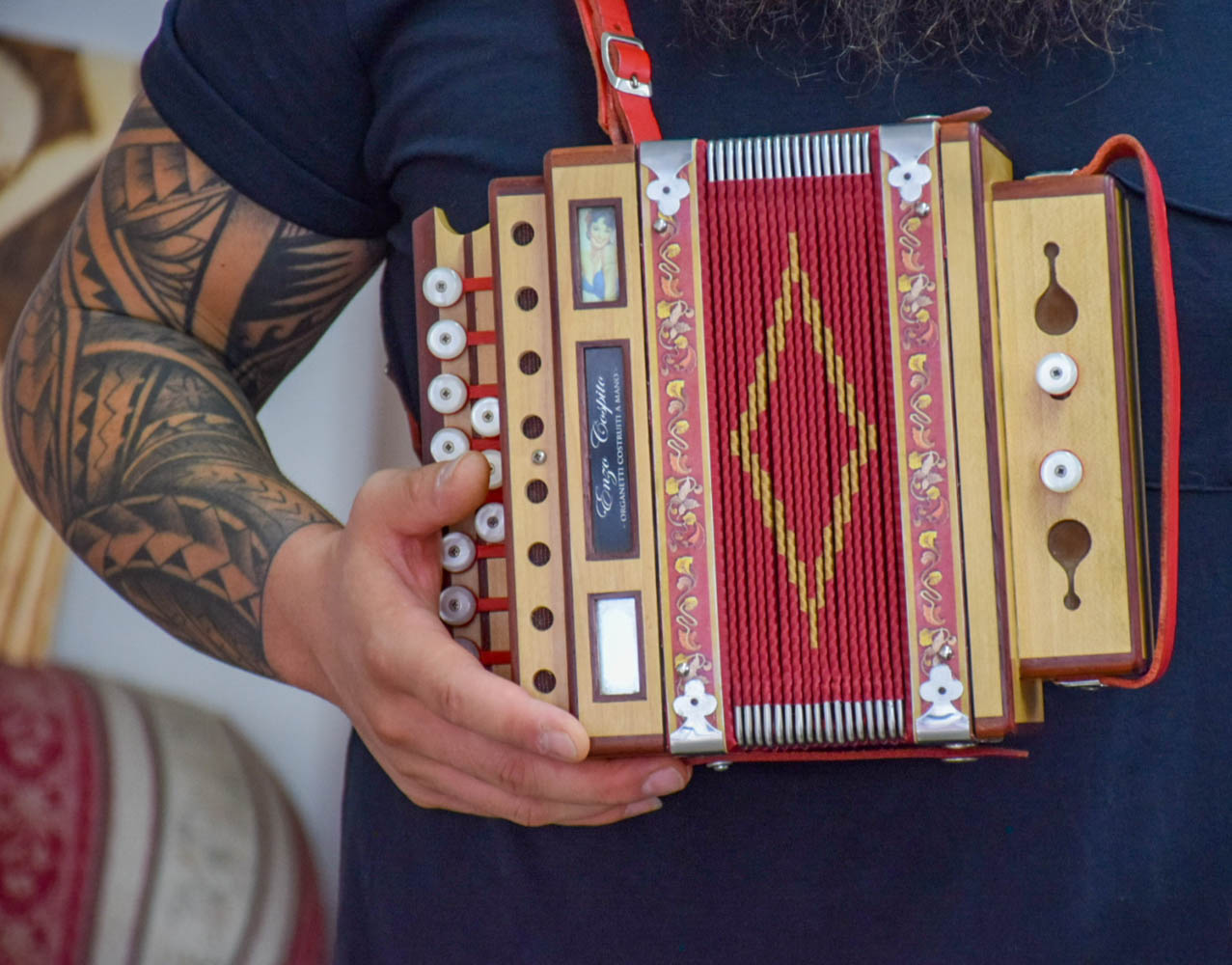
In Rocca Imperiale, we find an exceptional character, Enzo Cospito, perhaps the last cabinetmaker who, in his artisan workshop of musical instruments, builds, tunes, and repairs accordions and barrel organs, used in the south for dances and tarantellas, engraved with the technique of pyrography (writing with fire).
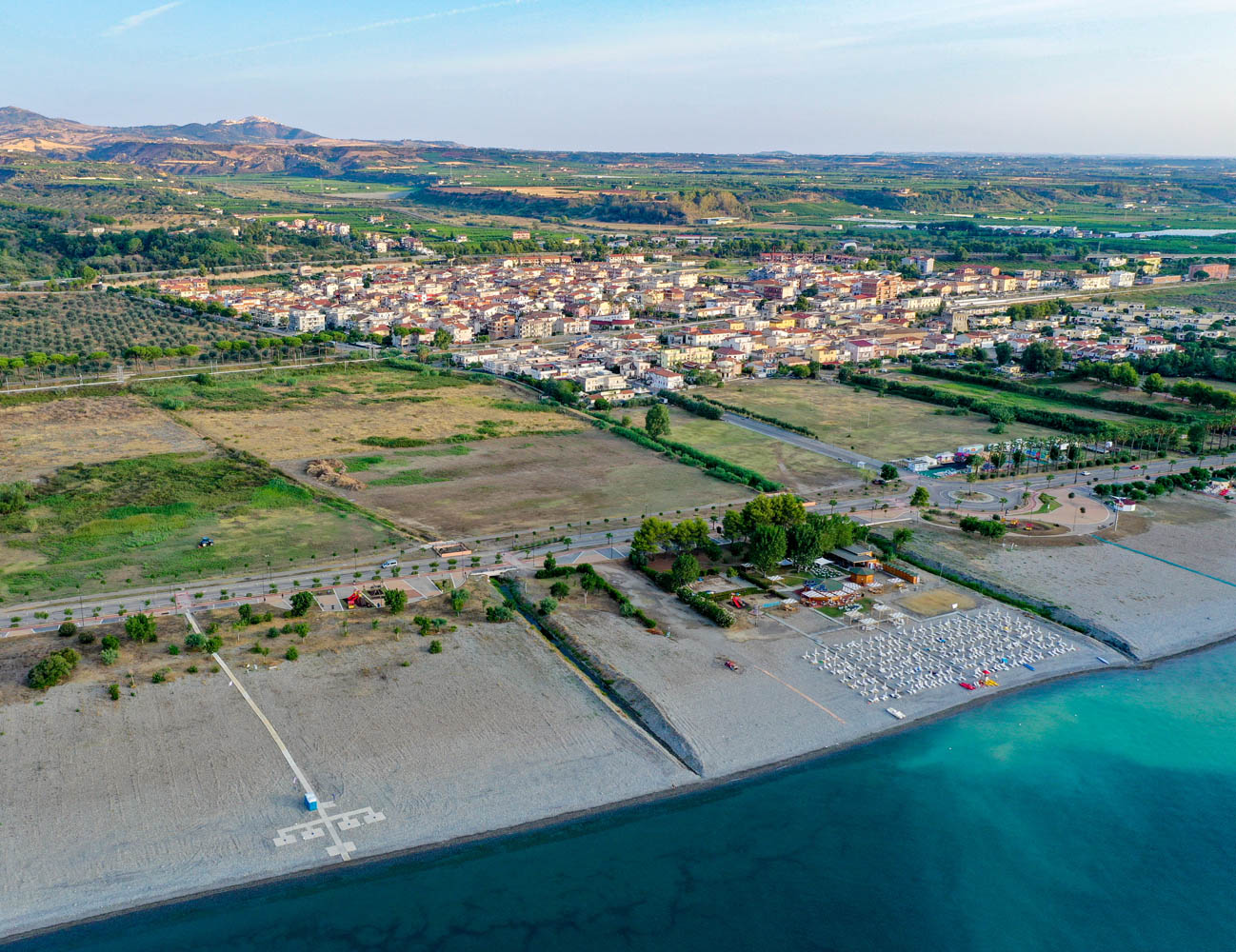
September is undoubtedly the best month to go on vacation. Both because the temperatures become more “human,” and because it avoids overcrowding at the sea or in the mountains, and for much cheaper prices. At its feet, Rocca Imperiale is bathed by the waters of the Ionian Sea, on which 7 kilometers of beautiful beaches made of rocks, pebbles, and fine golden sand overlook, such as the San Nicola Beach and the Lungomare Beach, while the beaches of Rocca have obtained two sails in the Blue Guide of Lega Ambiente. The path is equipped with a cycle path, playground, fitness area, and the possibility of taking a relaxing break in the wonderful greenery of Villa Zante (the village has been awarded the Lilac Flag for inclusive tourism).
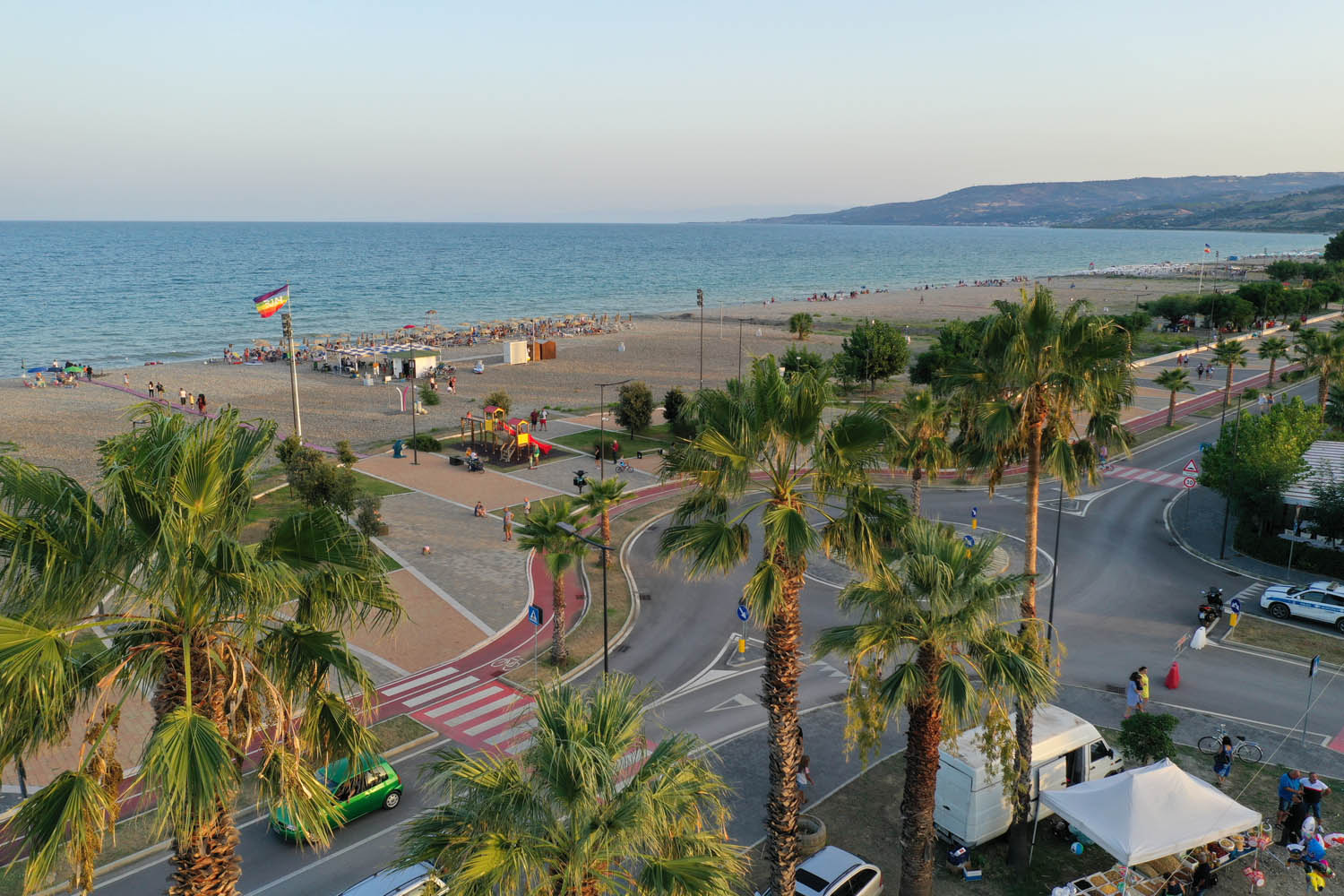
The cuisine of Rocca’s tradition, also appreciated for its excellent oil, follows the philosophy of southern gastronomy. Some dishes include: tagliolini and chickpeas, peperoni cruschi with black olives, homemade pasta, frizzuli and rascatill with bread crumbs, paparul and patan (peppers and potatoes), salt water. But, certainly, the true characters of the village are the elderly. Walking through the streets, it is obligatory to stop and talk with them, who kindly welcome tourists, telling anecdotes and ancient stories.
Gallery:
CREDITS FOTO:
Gianluca Avena
Marco Cardellicchio
Francesco D’Alemmo
Egidio Truncellito
Giuseppe Varasano

Giornalista italiano con oltre 40 anni di esperienza nel mondo dei media.
Leggi in:
![]() Italiano
Italiano





